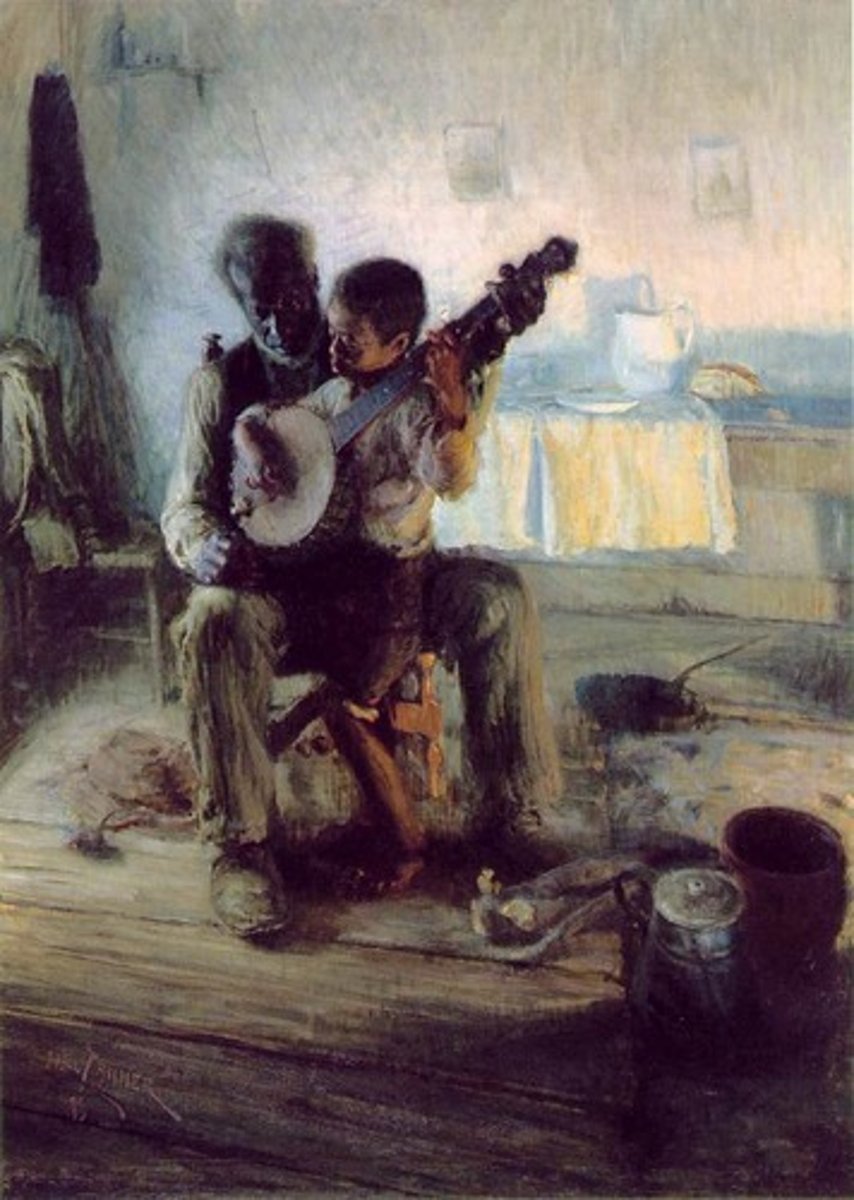Art History 104 Midterm Review
1/69
There's no tags or description
Looks like no tags are added yet.
Name | Mastery | Learn | Test | Matching | Spaced |
|---|
No study sessions yet.
70 Terms
Physiognamy
pseudoscience from eighteenth century based on idea that moral, inner truth of character was visible through the face and head, and that brow angles and facial features were measurable signs of the inherent quality of a human being. Based on Caucasian ideal as superior.
Iconography
of animal and human imagery combined to invoke powerful aspects of natural World
Effigy
Mound-earth construction in shape of person or animal (sometimes symbol), typical of Late Woodland Period (350-1300 CE).
History Painting
painting of narrative scenes from the past of actual or mythical events; Biblical or Classical and Mythological subjects
Hybridity
coming together of two things to create a third distinct thing, new mixed identities and practices
Middle Ground
Blending of Elements -new systems of meaning and exchange resulting from contact
Wampum
shell beads used as currency and medium for decorative belts recording important historic events, agreement, treaties
Naturalism
done to be faithful to what is seen, rending 3D in 2D medium
Abstraction
stylization and simplification, indication of general lines and colors
Modeling
Illusion of volume on a 2D surface
Pueblo
Term for both a distinct cultural group in SW US and for the communities housed in apartment structures built of stone, adobe, and other local material, Spanish "town" or "people"
Casta Painting
genre of art from 18th-century Mexico that visually documented the racial mixing between Indigenous, African, and European peoples under Spanish colonial rule
Mission
Catholic compound for the purpose of converting native People and claiming land for Spain
Repatriation
return of objects to original makers and users
Engraving/Etching
print that allowed mass reproduction of images and information, made by incising lines on metal plate or wood and inking
Deposition
an image portraying a scene of deposing or taking down Christ's body from cross
Lamentation
an image portraying the mourning Of dead Christ (a Pietà- Mary alone)
Neo-Classicism
reliance on elements from classical past— provides sense of timelessness and significance for the new artwork or architecture; for colonies/United States helped convey authority by linking them to grandeur of antiquity
Enlightenment
period in eighteenth century in which scientific inquiry expanded and emphasis placed on reason
Genre Painting
painting of everyday life
Hudson River School
Hudson River School painting-school of New York based nineteenth-century artists focused on landscape as distinctive to United States' Identity
Picturesque
aesthetic category prizing asymmetry, irregularity, variety Portrays pastoral world neither wild nor overcultivated
Sublime
aesthetic category emphasizing awe and terror, infinite, puniness of humankind in face of power
Ecocriticism
considers environmental concerns
Anthropocene
the age in which humans have had most impact on environment
Manifest Destiny
emerging expectation that US political and social future lay in west Entitlement, conviction that American democratic institutions were destined by providence to triumph over all other groups
Ledger Drawing
Adaptive art of Plains Cultures Use of paper and pencils from account books of white traders and settlers in combination with elements of rock and hide drawing style
Polygenesis
false notion that different groups of humans descend from different ancestors rather than
Monogenesis
all humans have common ancestry
Reconstruction
Congress passed the Reconstruction Acts of 1867, in which Southern States had to allow Black People to vote and receive education (but did not give them land)
13th, 14th, and 15th Amendments to the Constitution had granted blacks the same legal protections as whites.
The Freedmen's Bureau was authorized to administer the new laws and help Black people attain their economic, civil, educational, and political rights
Jim Crow Laws
rigid anti-Black segregation laws in force between the end of Reconstruction and the Civil Rights Movement
Washington Crossing the Delaware
Emmanuel Leutze
1. Washington planned and led surprise attack on British (Hessian camp) Dec 25-26, 1776, leading to decisive victory
2. Image was painted in Germany by a German artist
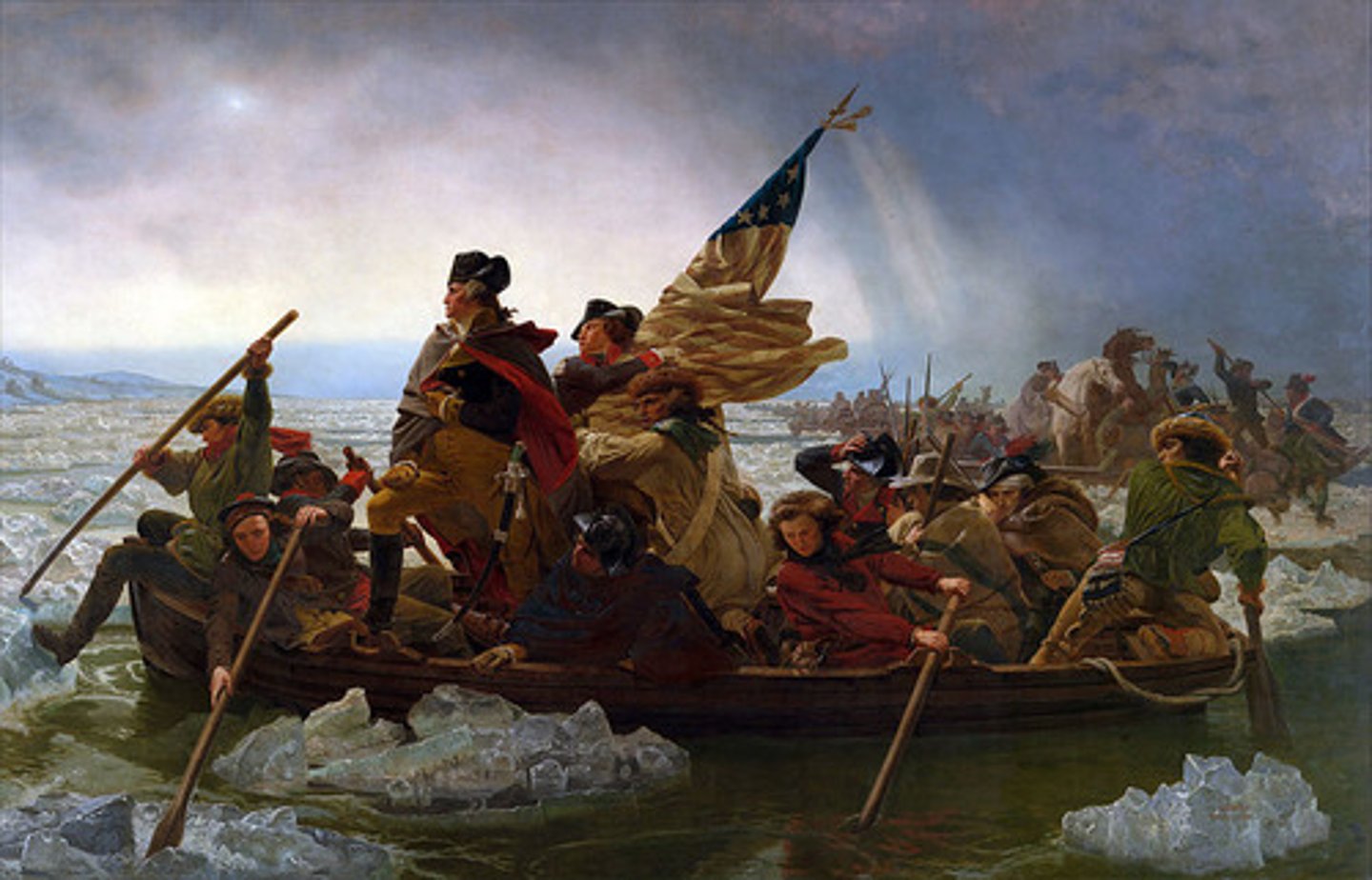
Uncle Tom and Little Eva
Robert Scott Duncanson
1. Based on the novel Uncle Tom's Cabin
2. Eva teaching Tom, her father's slave about the Bible/heaven, shows physiognomy
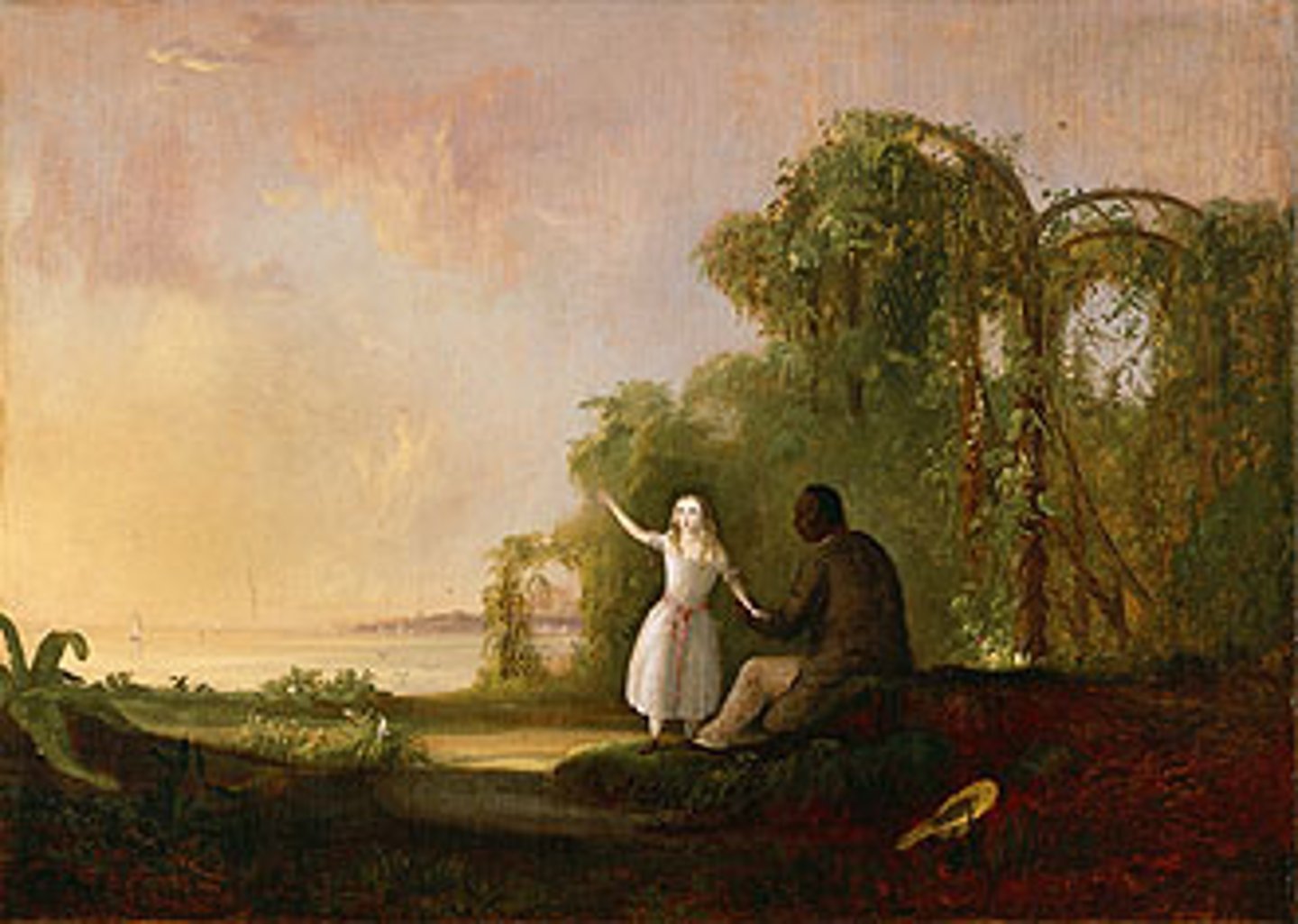
Eagle Man
Mississippian Culture
1. Compares warrior to skillful bird of prey
2. Represents humans as only a part of a world and in collaboration with nature's gifts
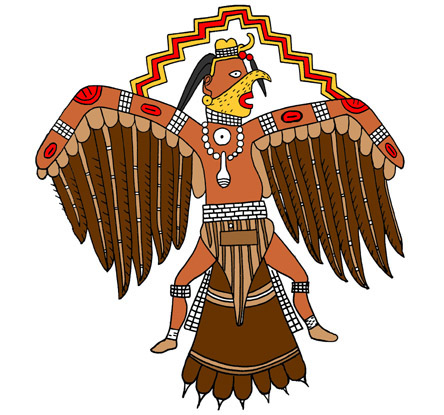
America
Stradanus
1. shows the idea of awakening: Europeans giving the land and native people their purpose
2. Cross and astrolabe show ability to navigate in contrast with her primativeness
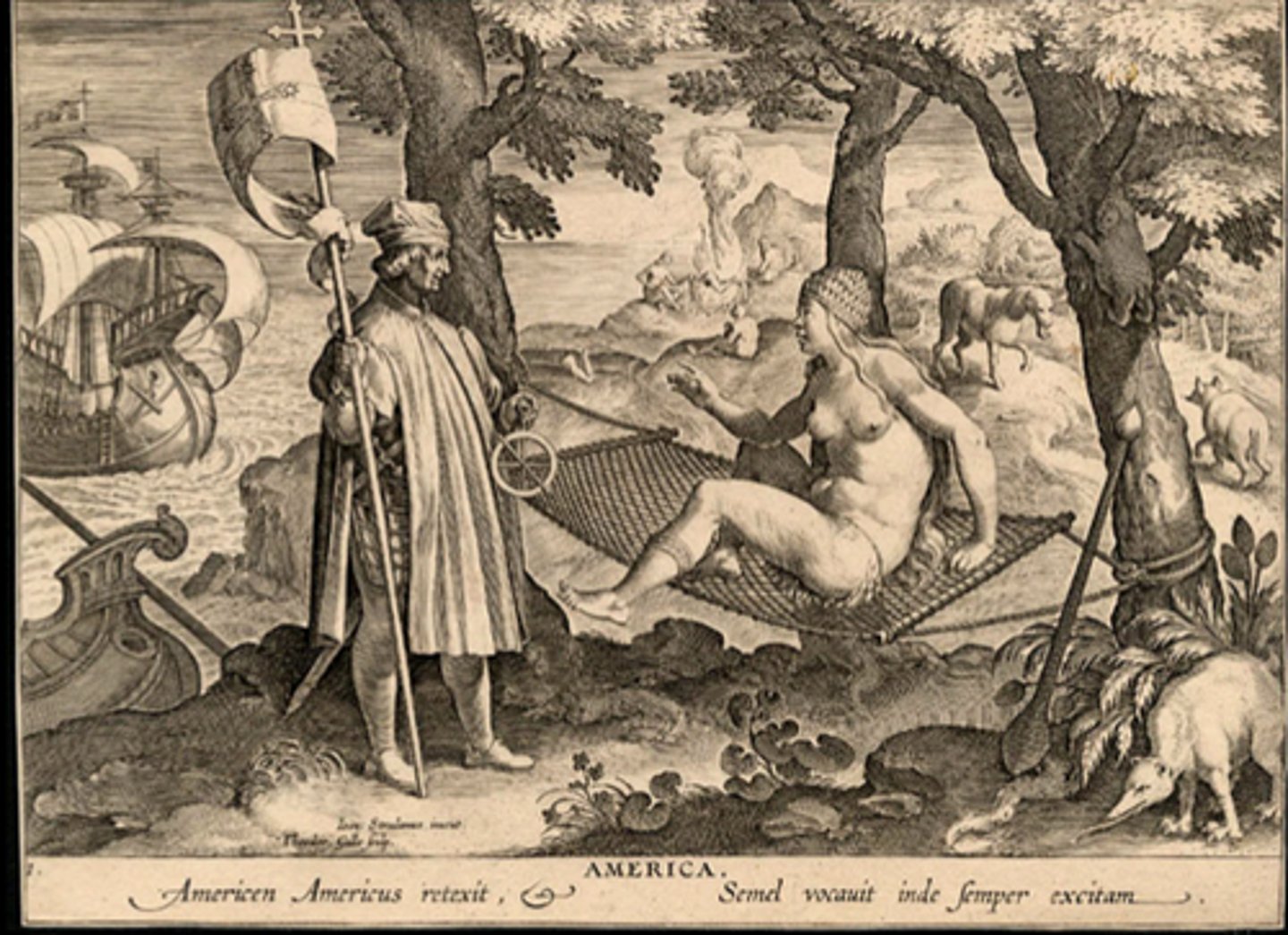
Lenape Wampum Belt
Woman artist
1. record history, important moments, treaties
2. Hand holding can be seen as a gesture of friendship
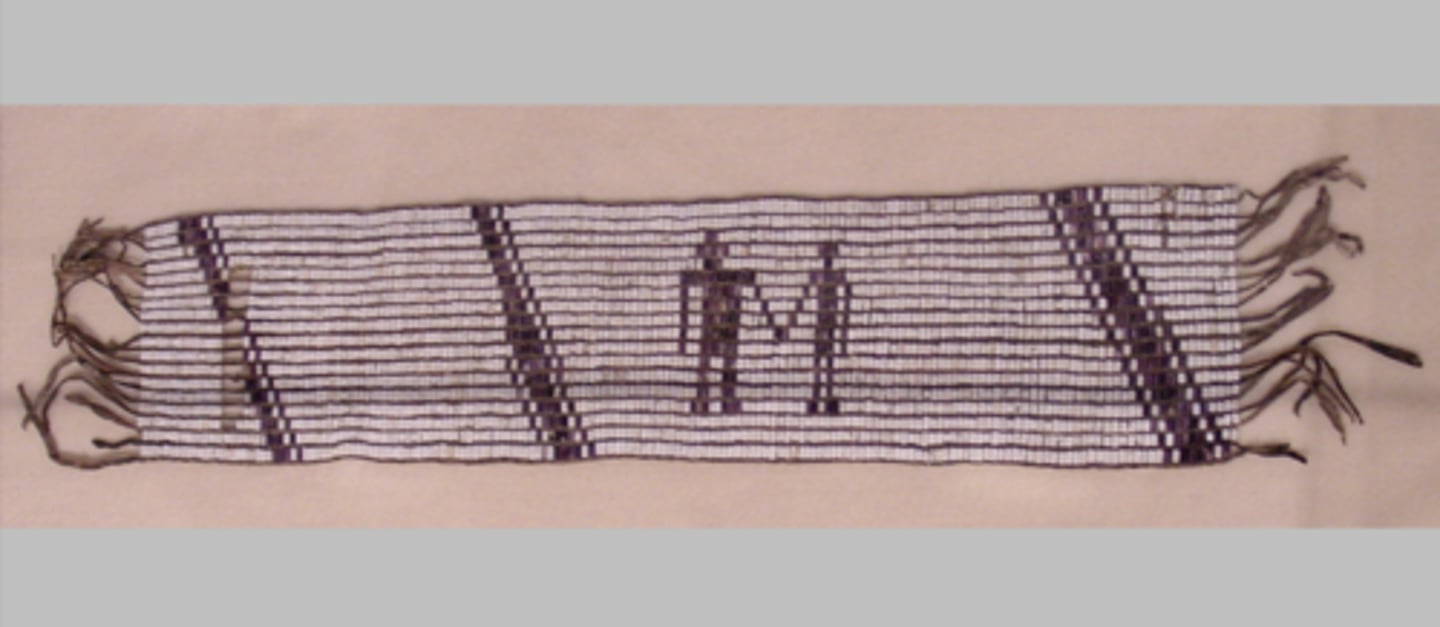
War Club
Mohawk or Seneca
1. backside has headless figures that represent killed enemies
2. Shows symbolic tattoos unique to the individual

The Four Kings
Jane Verelst
1. Shows hybridity between natives and europeans
2. Holding wampum belt-recording historical event
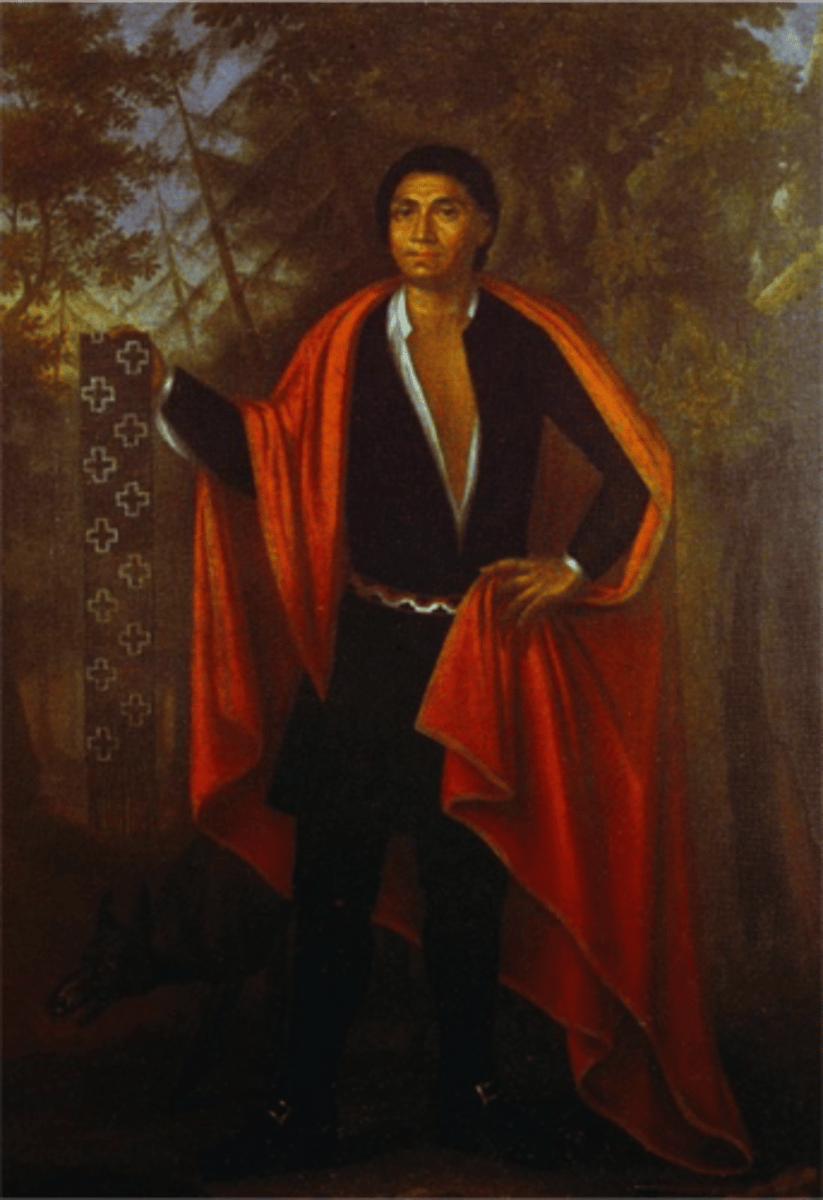
William Penn's Treaty with the Lenape
Benjamin West
1. Trading cloth- bringing lenape into trade/circulation of goods
2. Male-dominated leadership vs. women in positions of authority
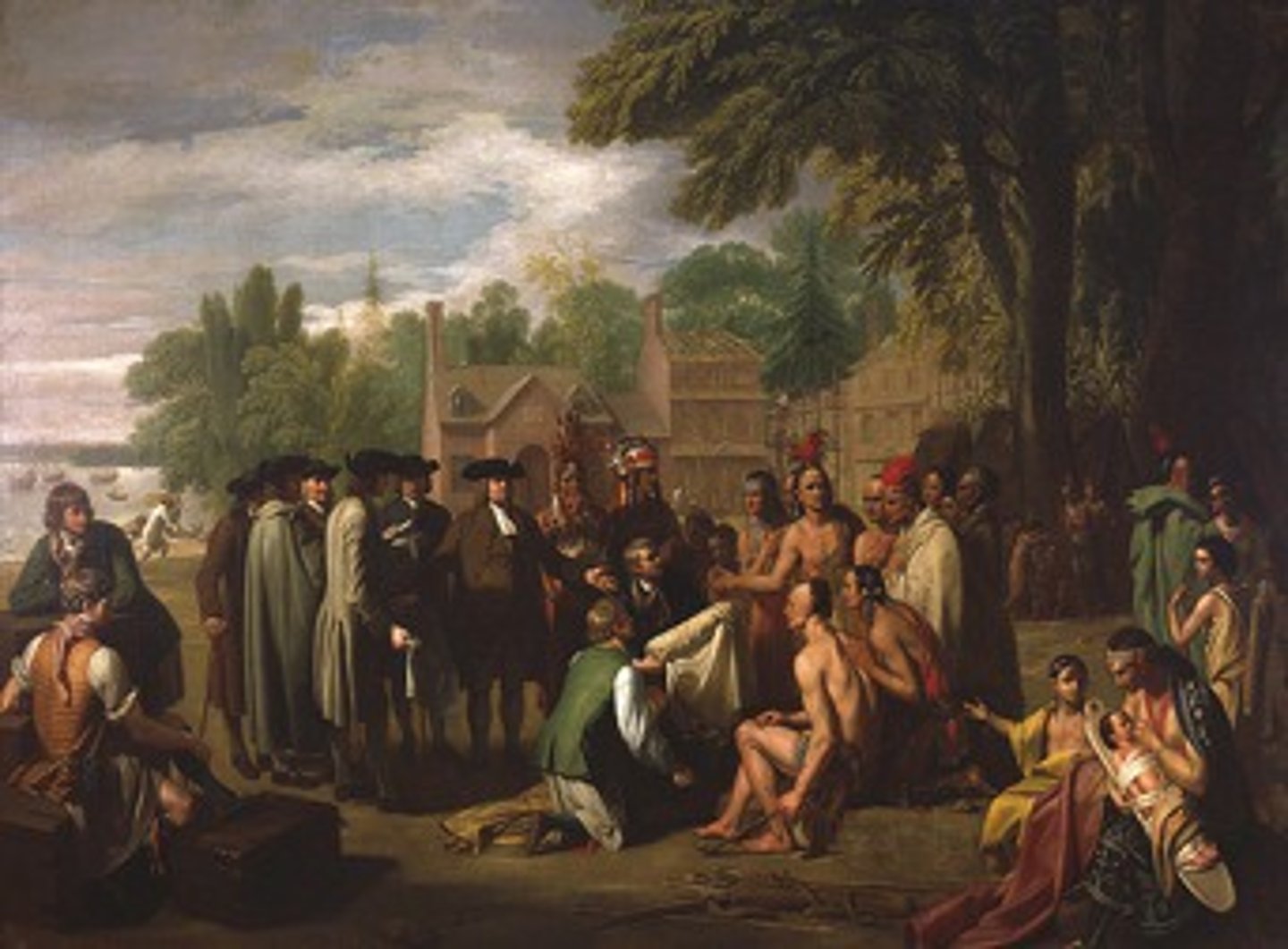
Elizabeth Freake and Baby Mary
Freake-Gibbs Limner
1. Colorful jewels and lace show wealth and modesty
2. Style used outlines and linear details rather than portraying depth
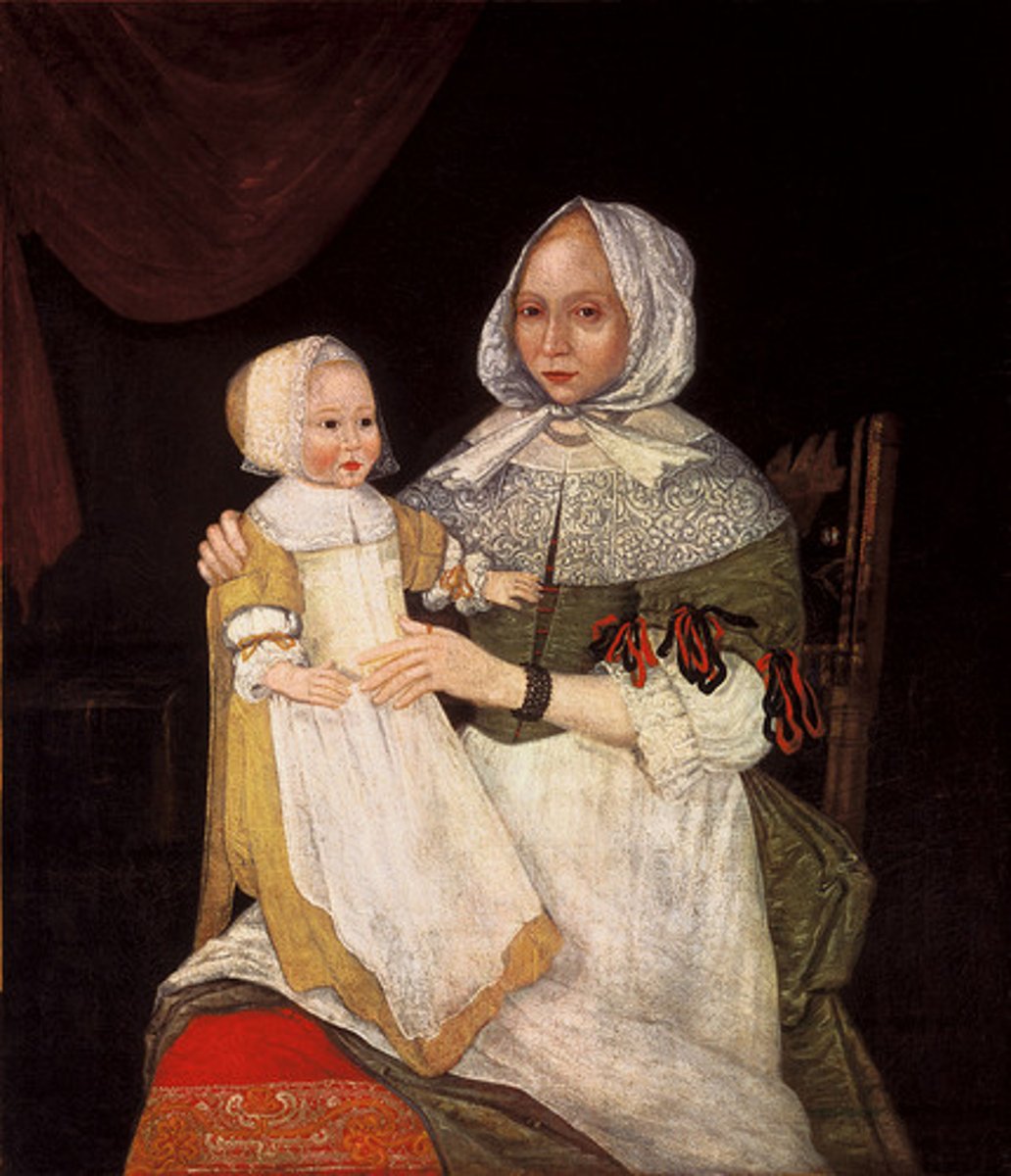
Koshare Clown Dancer Bowl
Mimbres People
1. Satirizes life by exaggerating improper behavior
2. Shows Hopi clown dancer
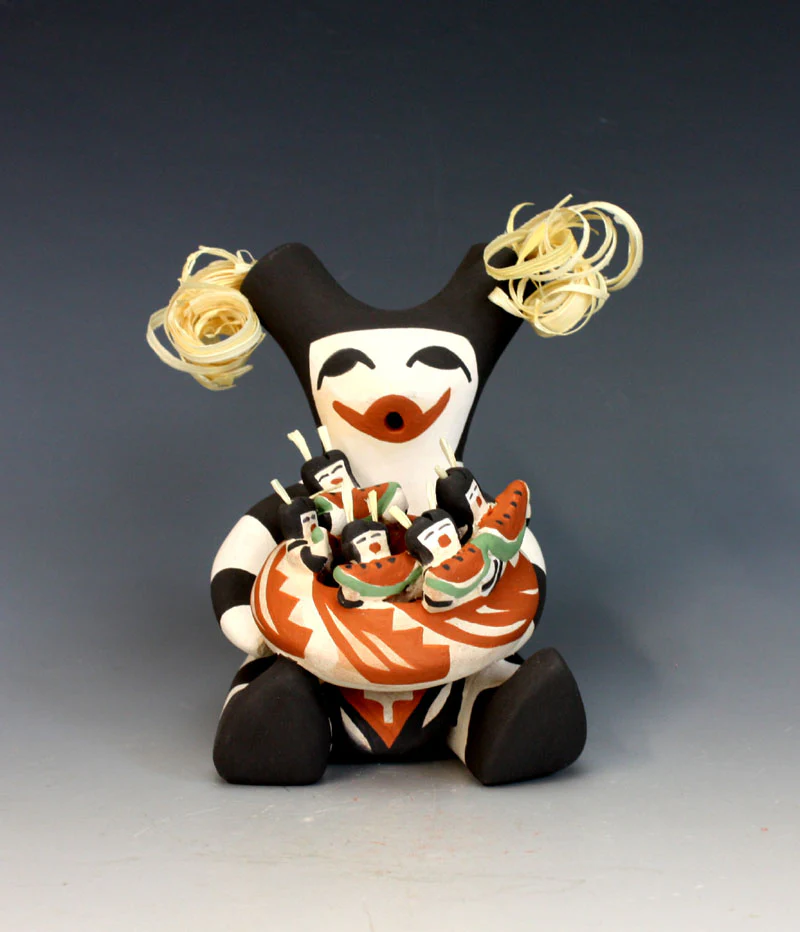
Rancho de Taos
San Francisco de Asís Mission Church
1. Spanish missionaries started church
2. Acoma people built with adobe
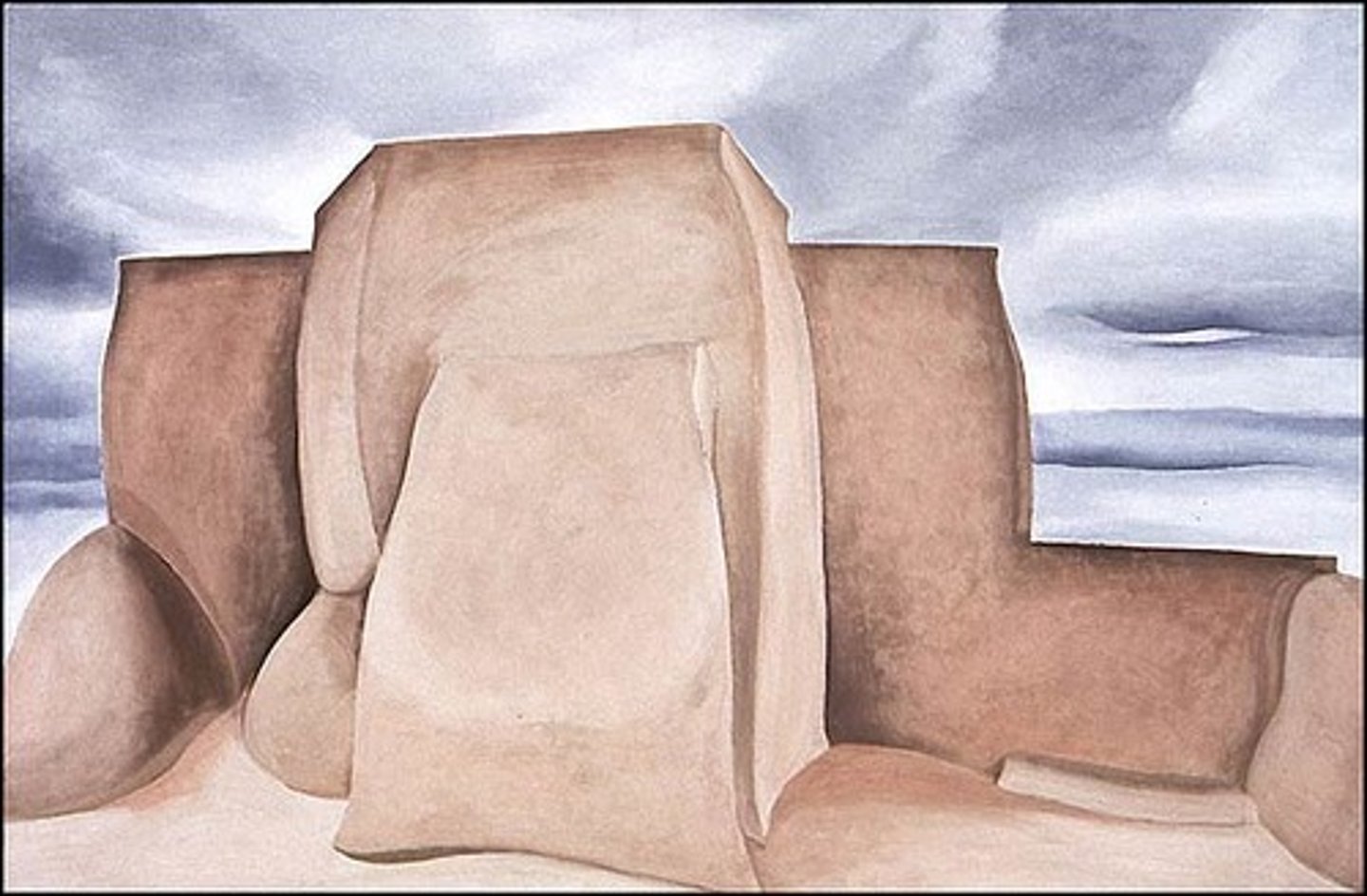
The Mission of San Gabriel
Ferdinand Deppe
1. passionate belief in missioning-saving people by converting them, so if they died they would be saved from hell
2. native peoples who were forced to build and live in the churches and built water systems
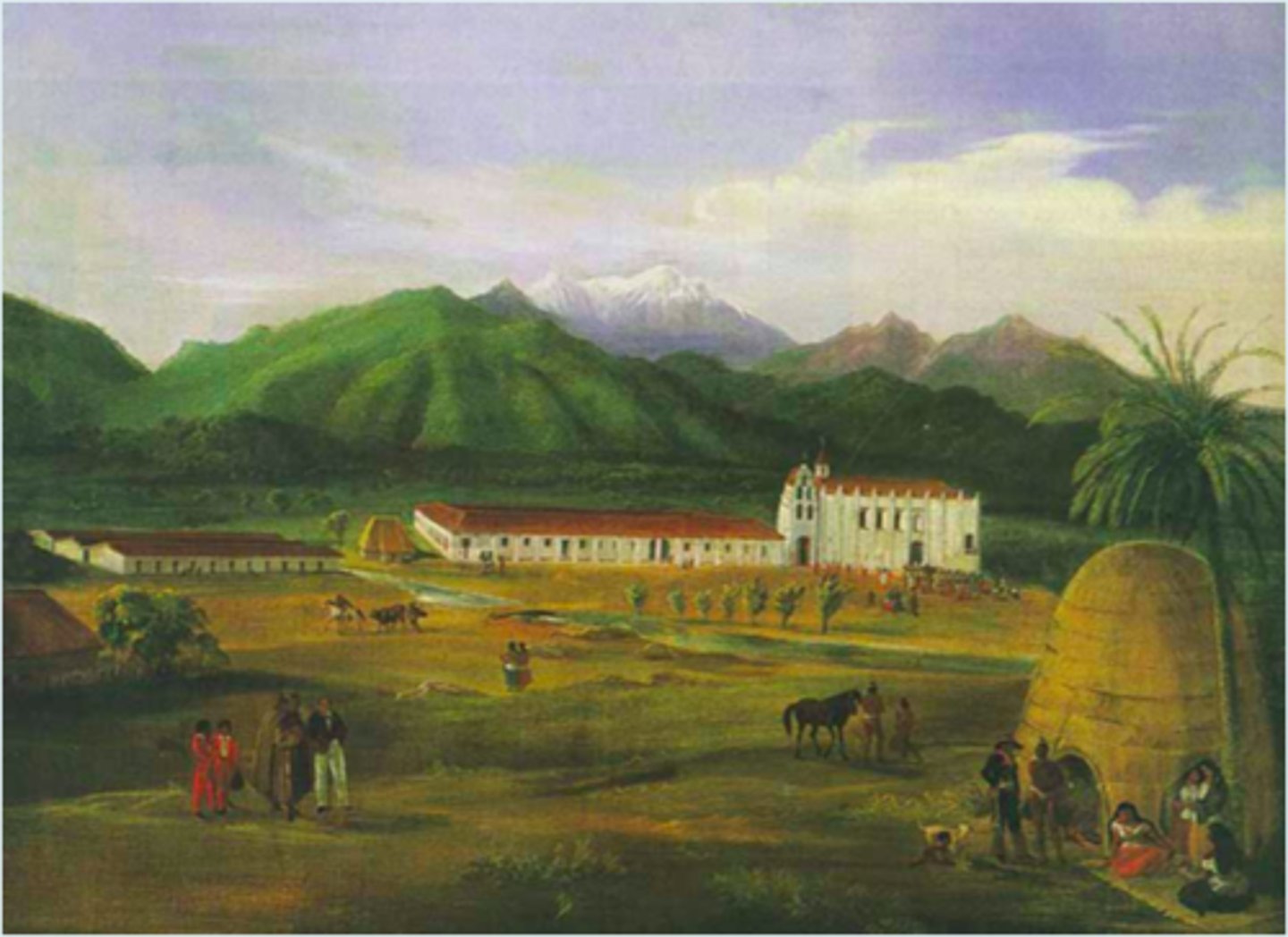
From Spanish and Indigenous
Francisco Clapera
1. Casta painting
2. codifying the forms of racial mixing that took place in New Spain, the "pure-blooded" elites may have sought a form of control over the "dilution" of pure Spanish blood.
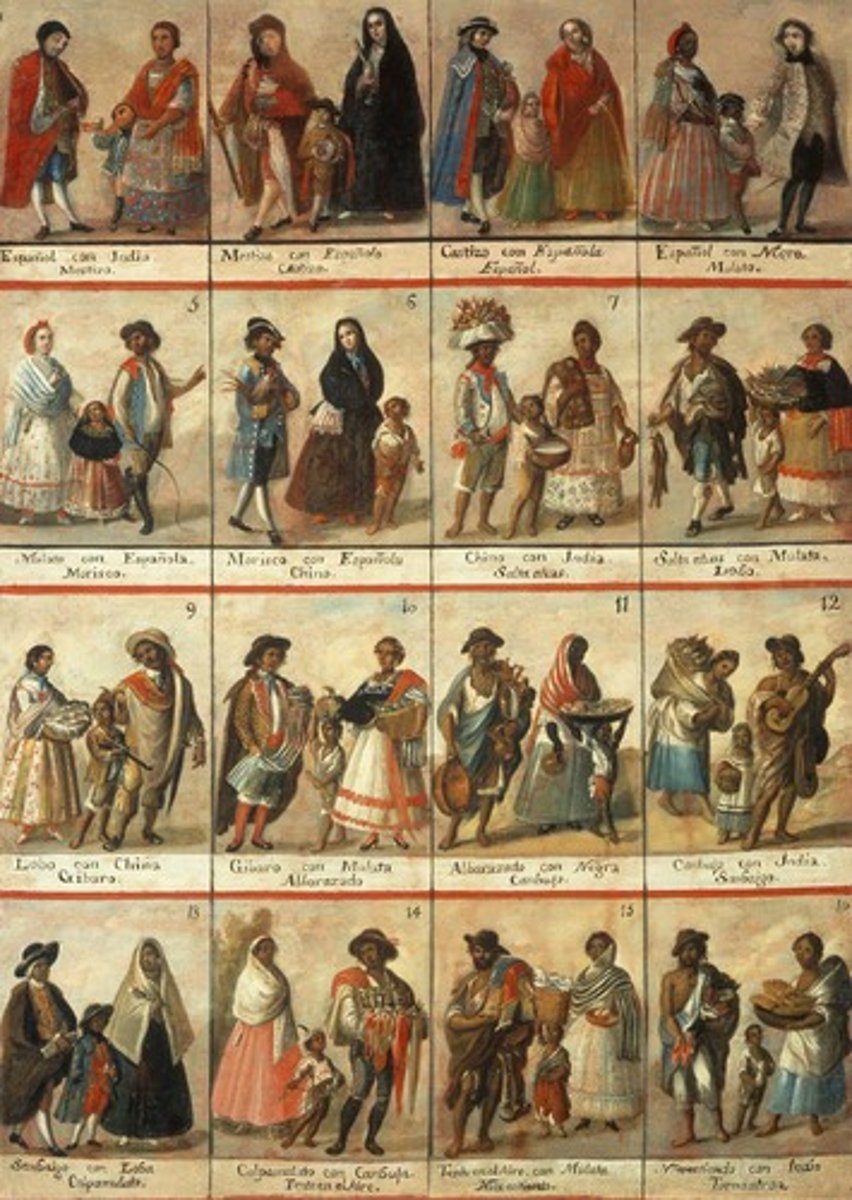
Paul Revere
John Singleton Copley
1. Holding tea pot in relation to recent boston tea party
2. Hand gesture is a symbol of intellectualism and thought
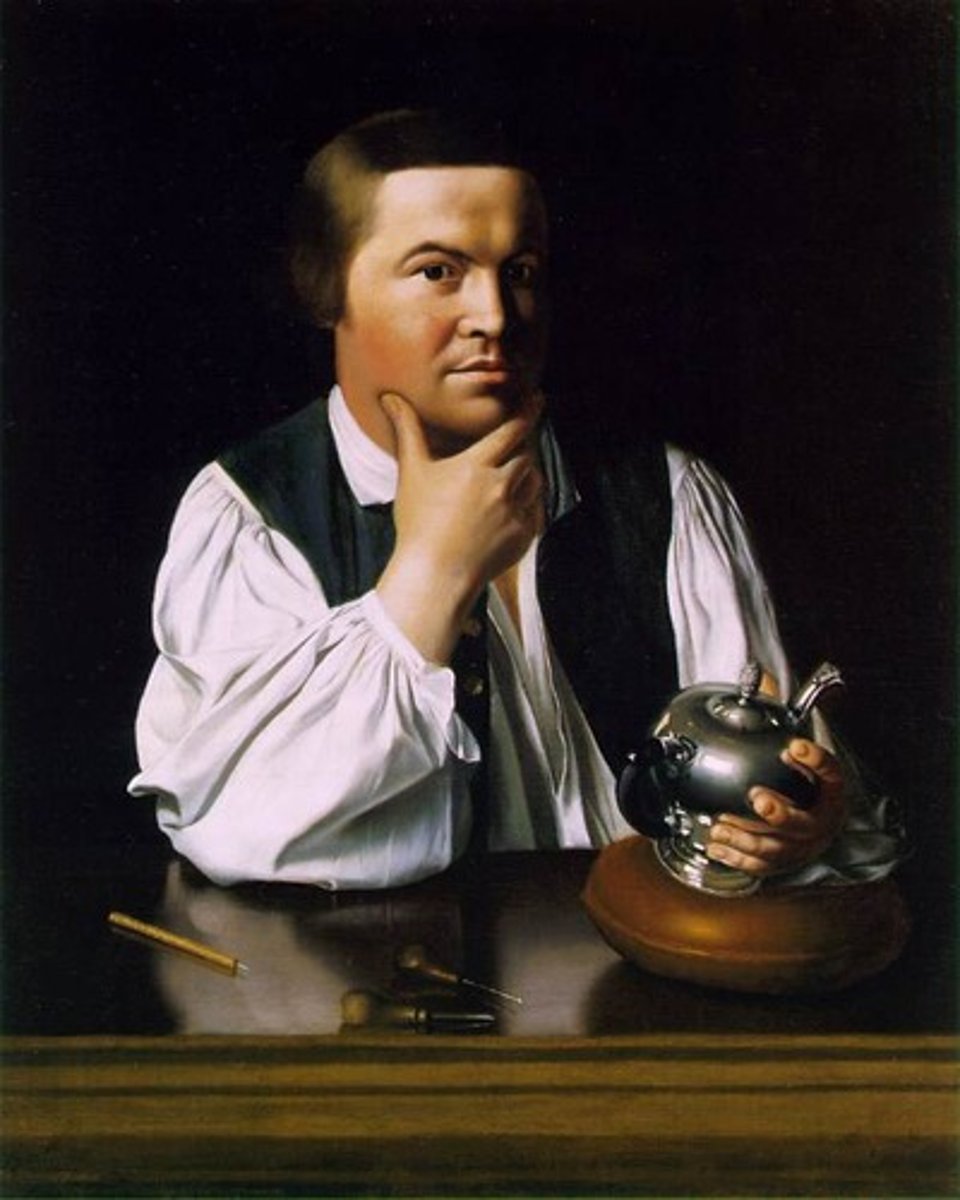
Watson and the Shark
John Singleton Copley
1. shows contrast between pure good (figure in water) and evil (shark)
2. Triangular forms show instability/chaos and loss of control for helping the figure
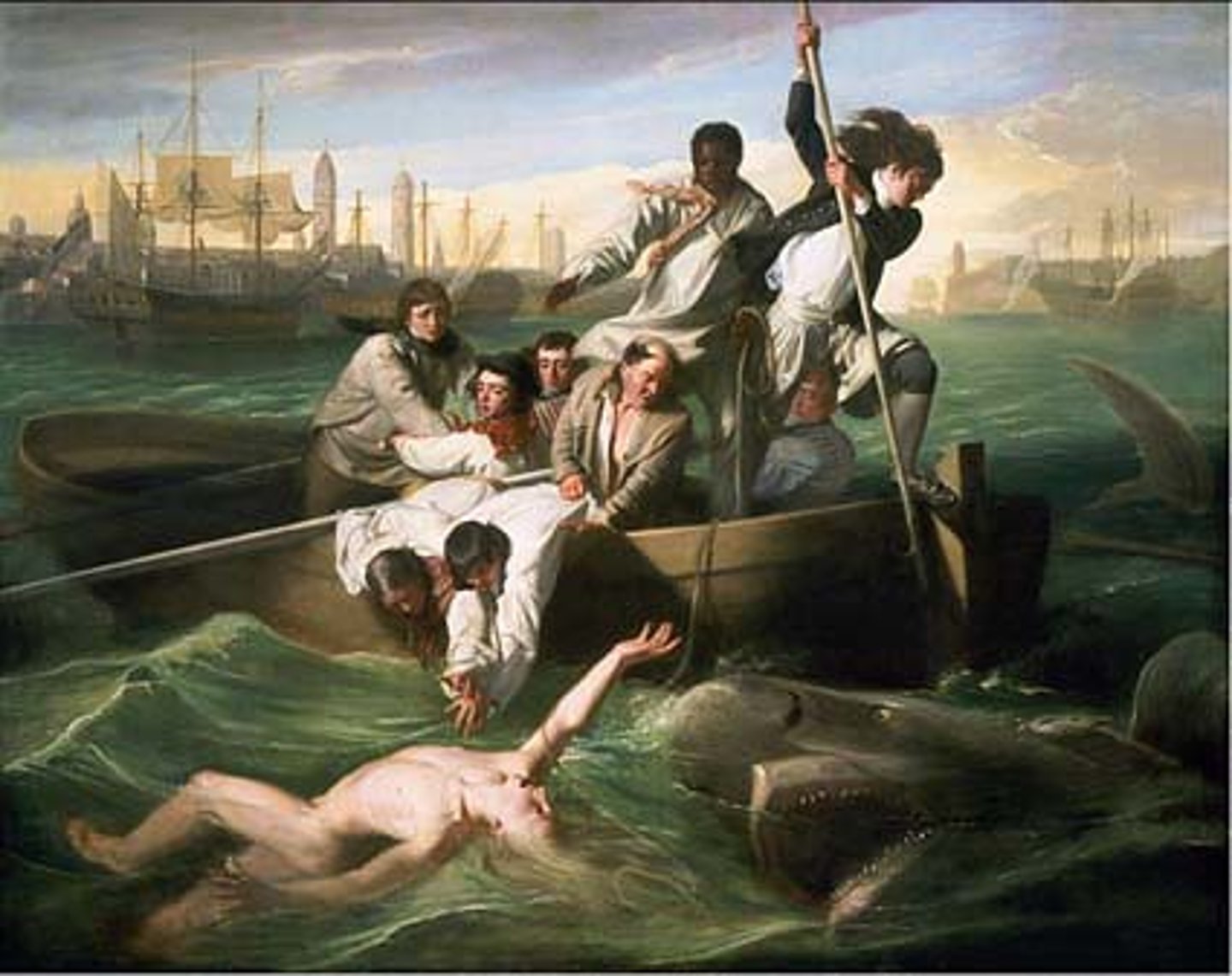
Death of General Wolf
Benjamin West
1. Shows lamentation of general wolf
2. Native american = melancholy because seeing inevitability of advancement of white history on his lands while he is unrelated to the action and merely watching the fate of the indigenous people play out
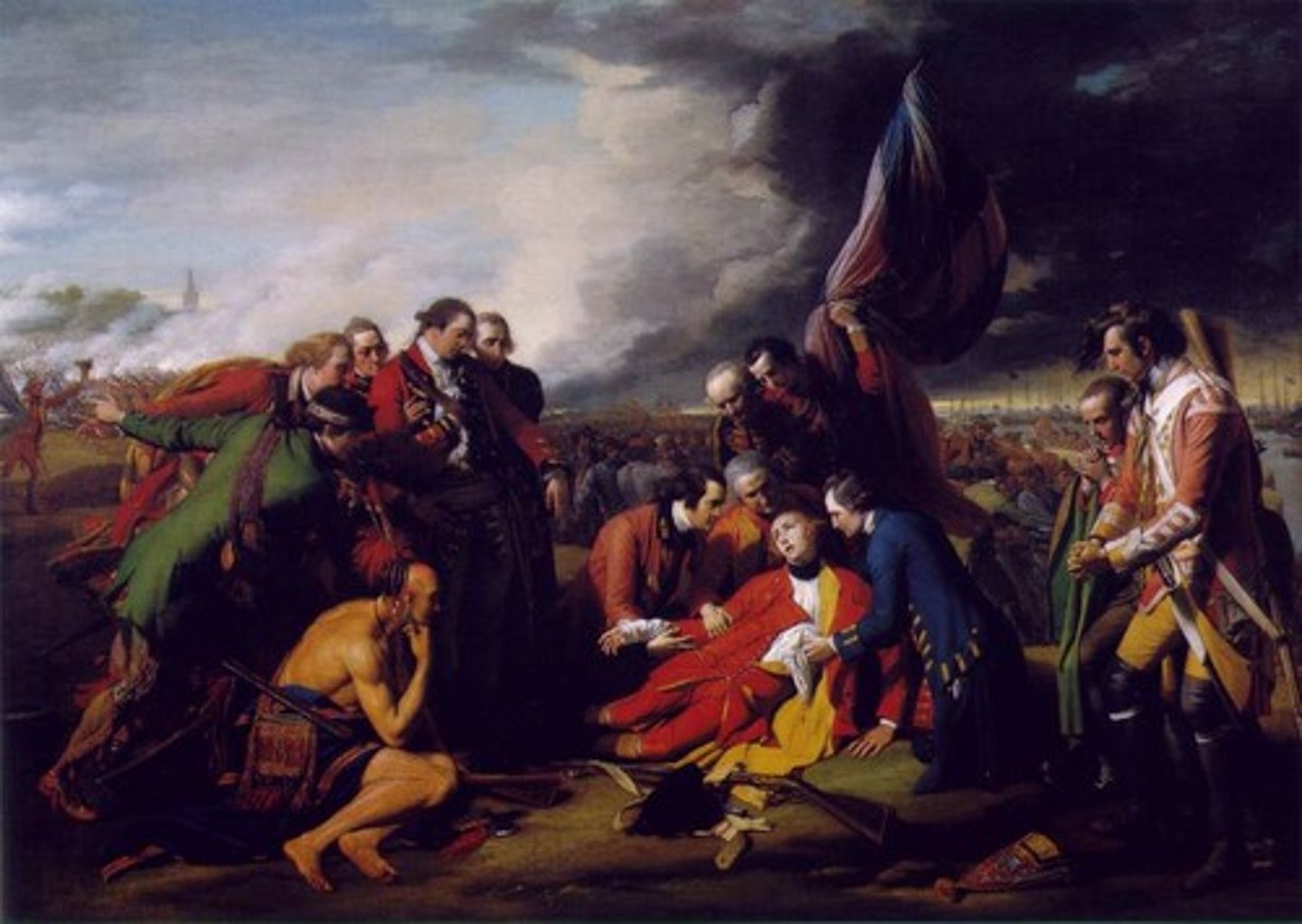
Phillis Wheatley
Scipio Moorhead
1. First portrait of a black woman in us art
2. Came from gambia for slave trade, but became very educated and wrote poems
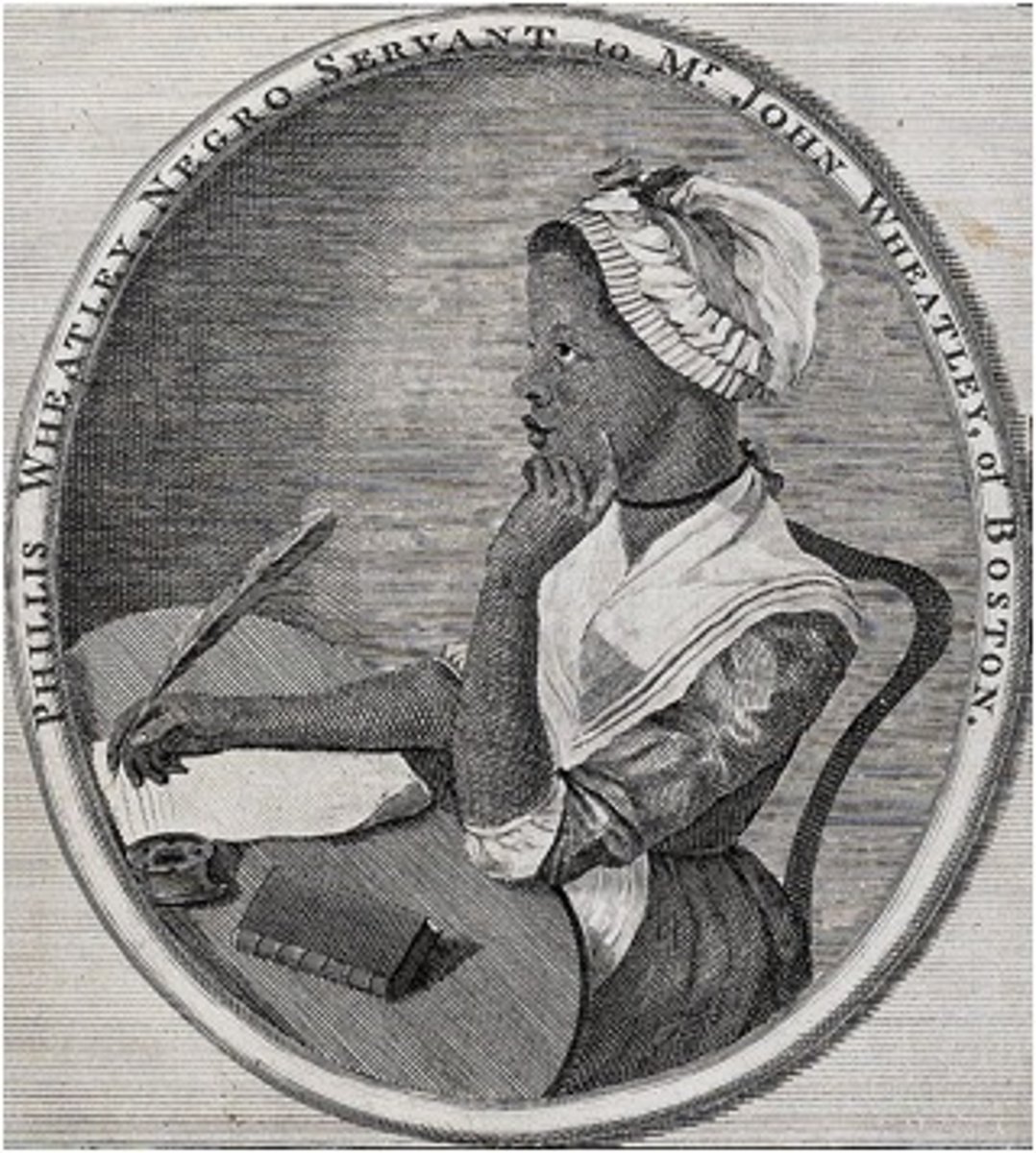
The Artist in His Museum
Charles Wilson Peale
1. Related to the enlightenment-first natural history museum
2. Turkey because there was debate over turkey vs. eagle to be the first national bird
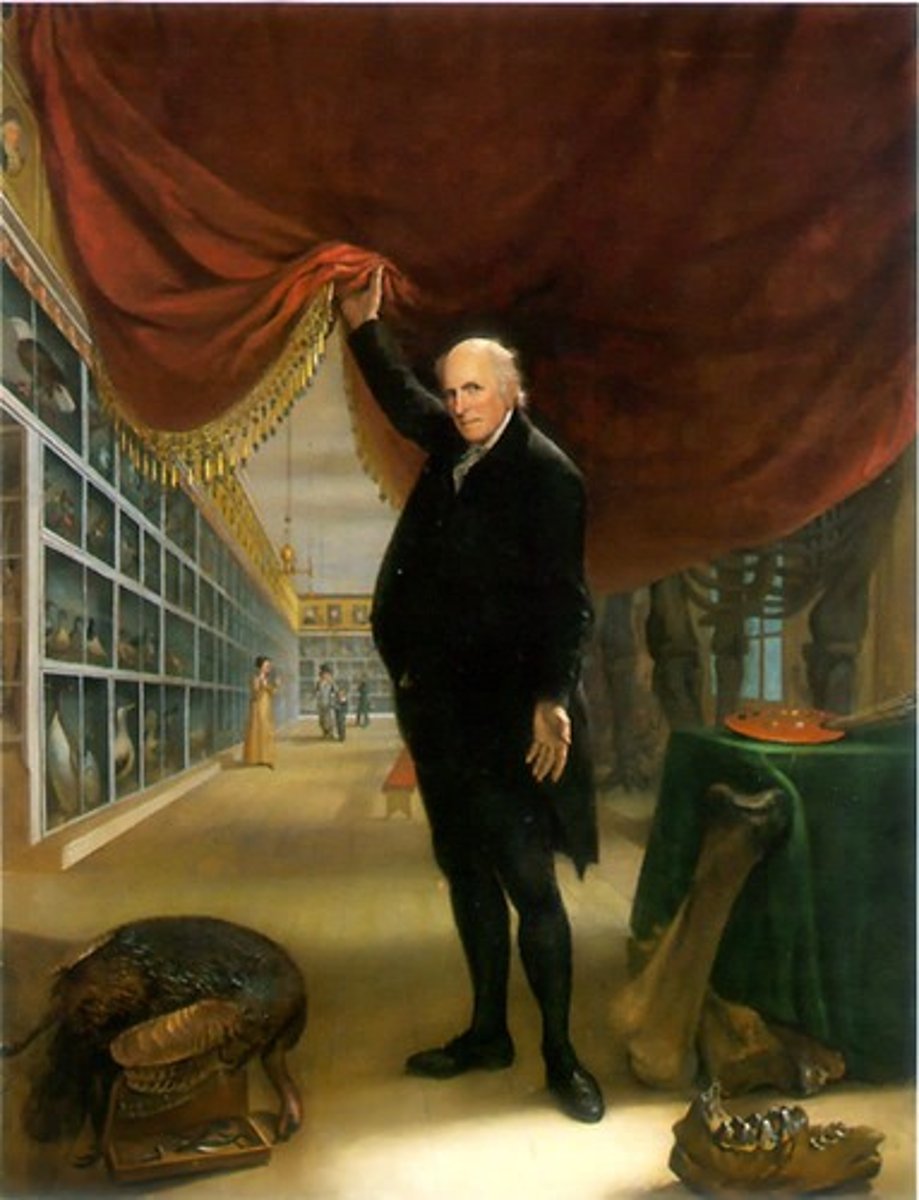
War News From Mexico
Richard Caton Woodville
1. This is a genre painting neutrally depicting news of westward expansion
2. The black people in the image are left out- portrayed by figurative inside and outside
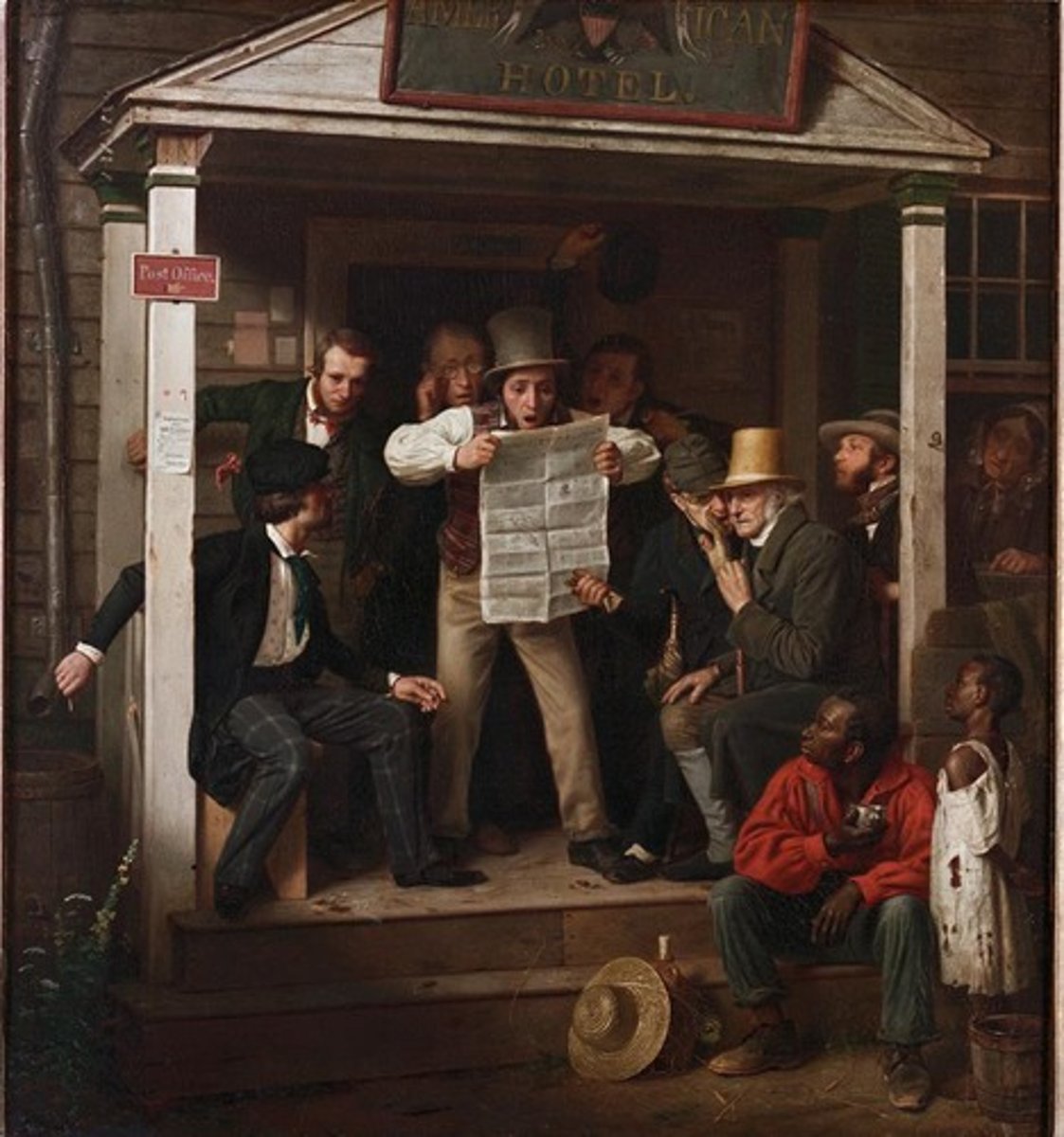
Eel Spearing at Setauket
William Sidney Mount
1. This is a genre painting commissioned by George Washington Strong depicting memories from his childhood
2. Controversial because it showed a black woman more capable and strong than a white boy
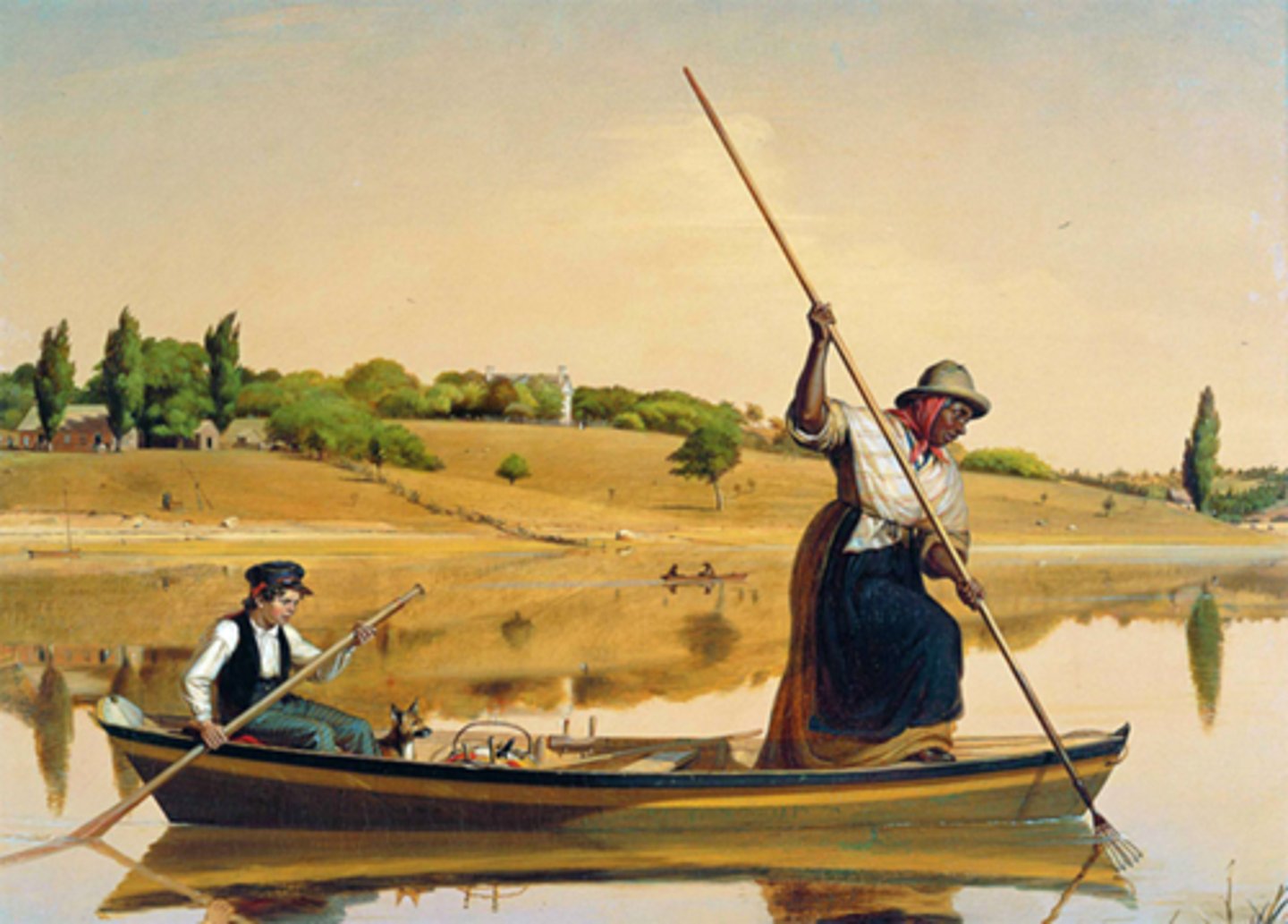
Face Jug
1. Made by enslaved black people
2. Demonstrates powers of ancestors and spirits
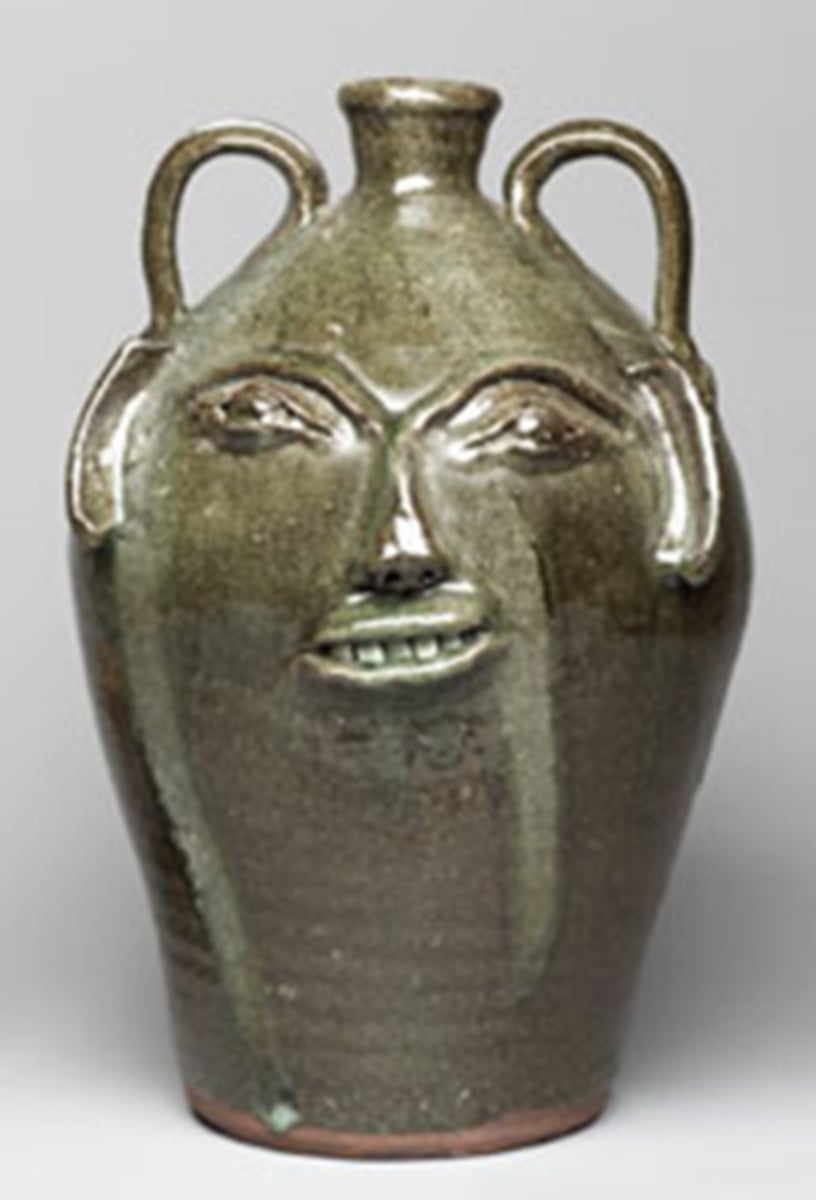
The Oxbow
Thomas Cole
1. Picturesque image
2. Taught in hudson river school- sense of divinity and nationalism
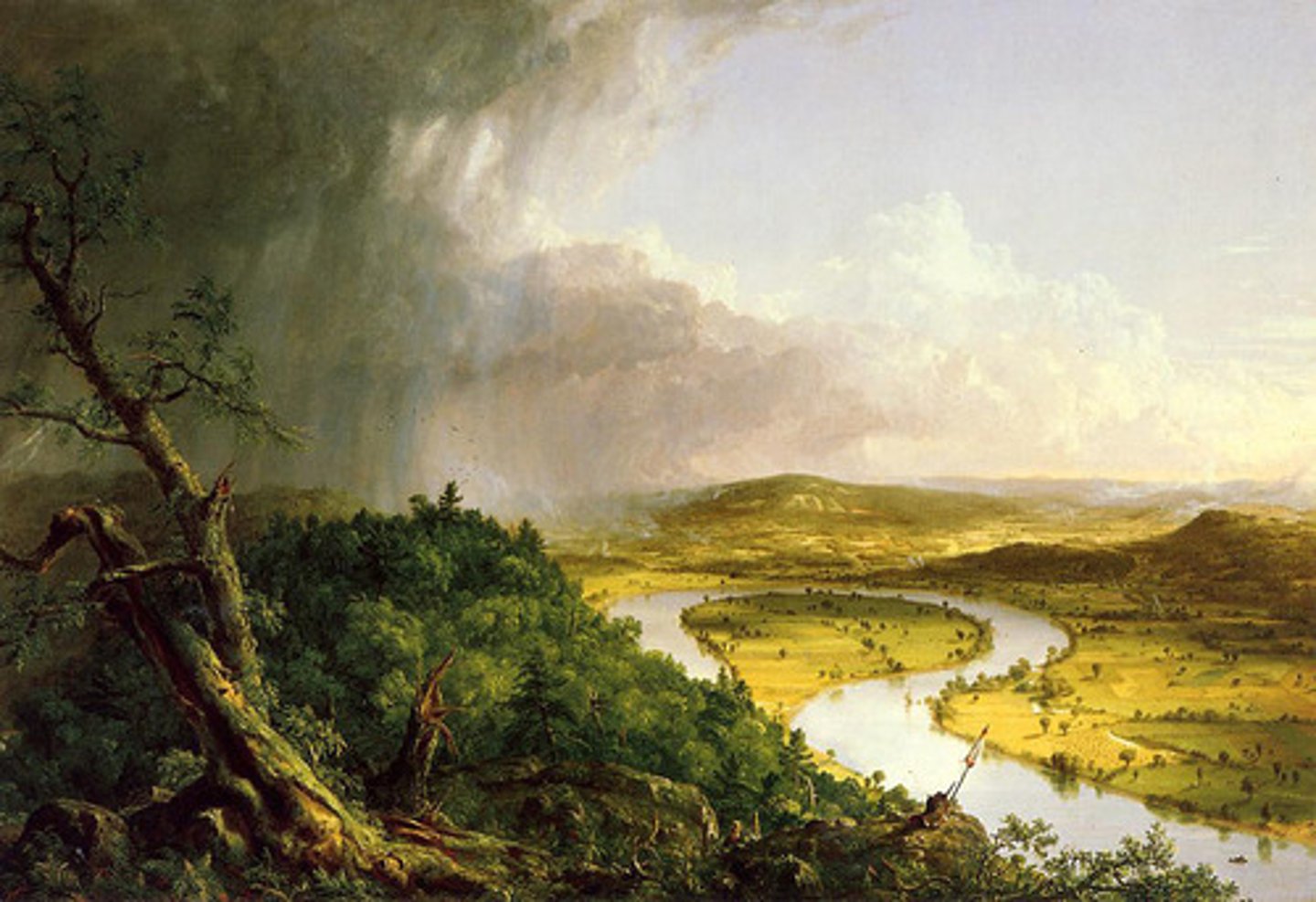
Landscape with Rainbow
Robert Scott Duncanson
1. Reinforce the idea that man lives in harmony with nature
2. Picturesque image
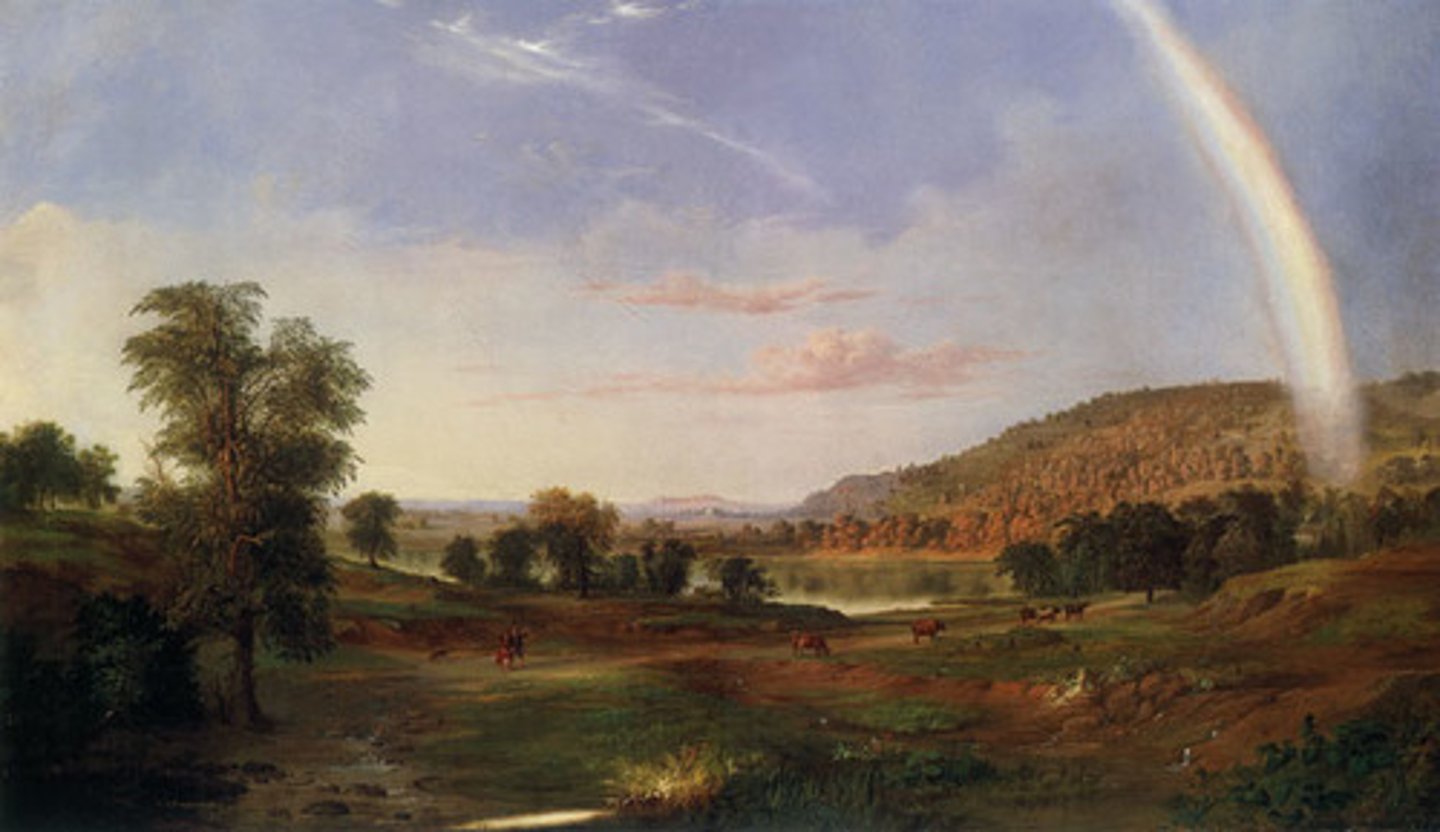
Niagara
Frederick Church
1. Sublime image
2. Rainbow evoked nationalism and divine approval of america
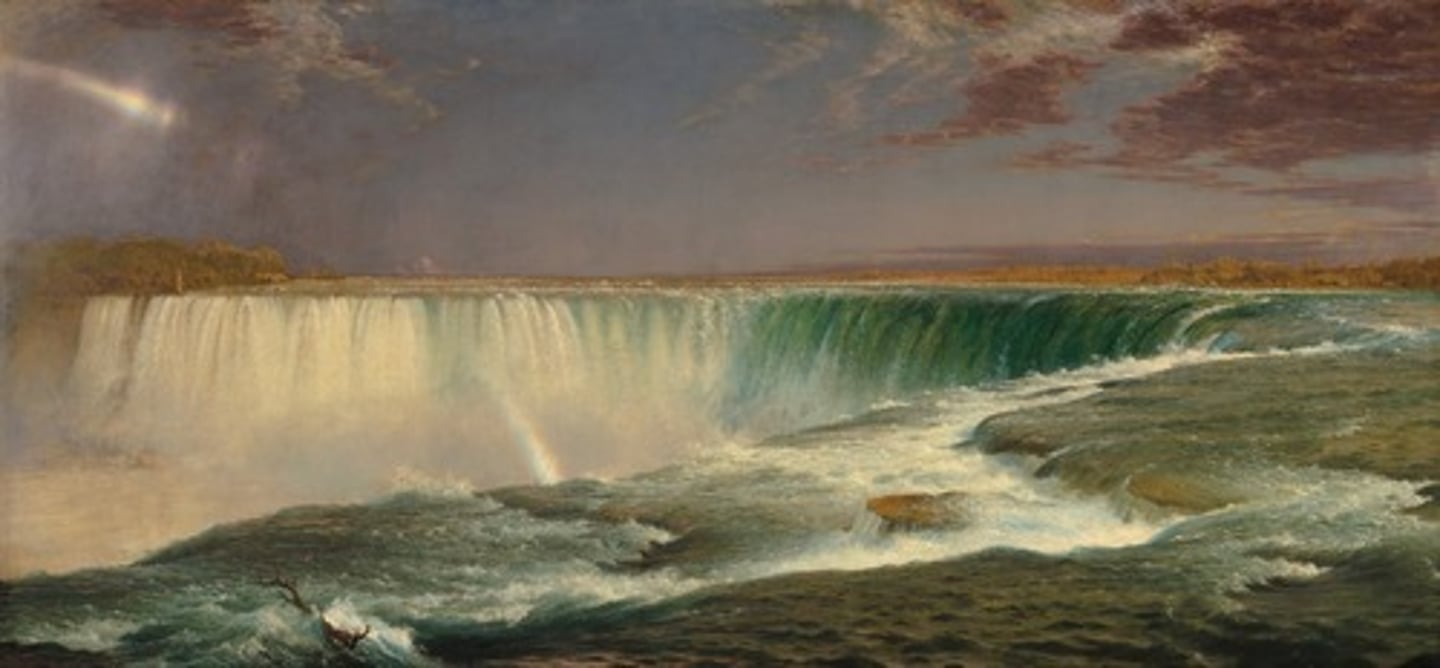
The Course of Empire: The Savage State
Thomas Cole
1. Sublime image
2. Shows uncorrupted land and harmony of natural world
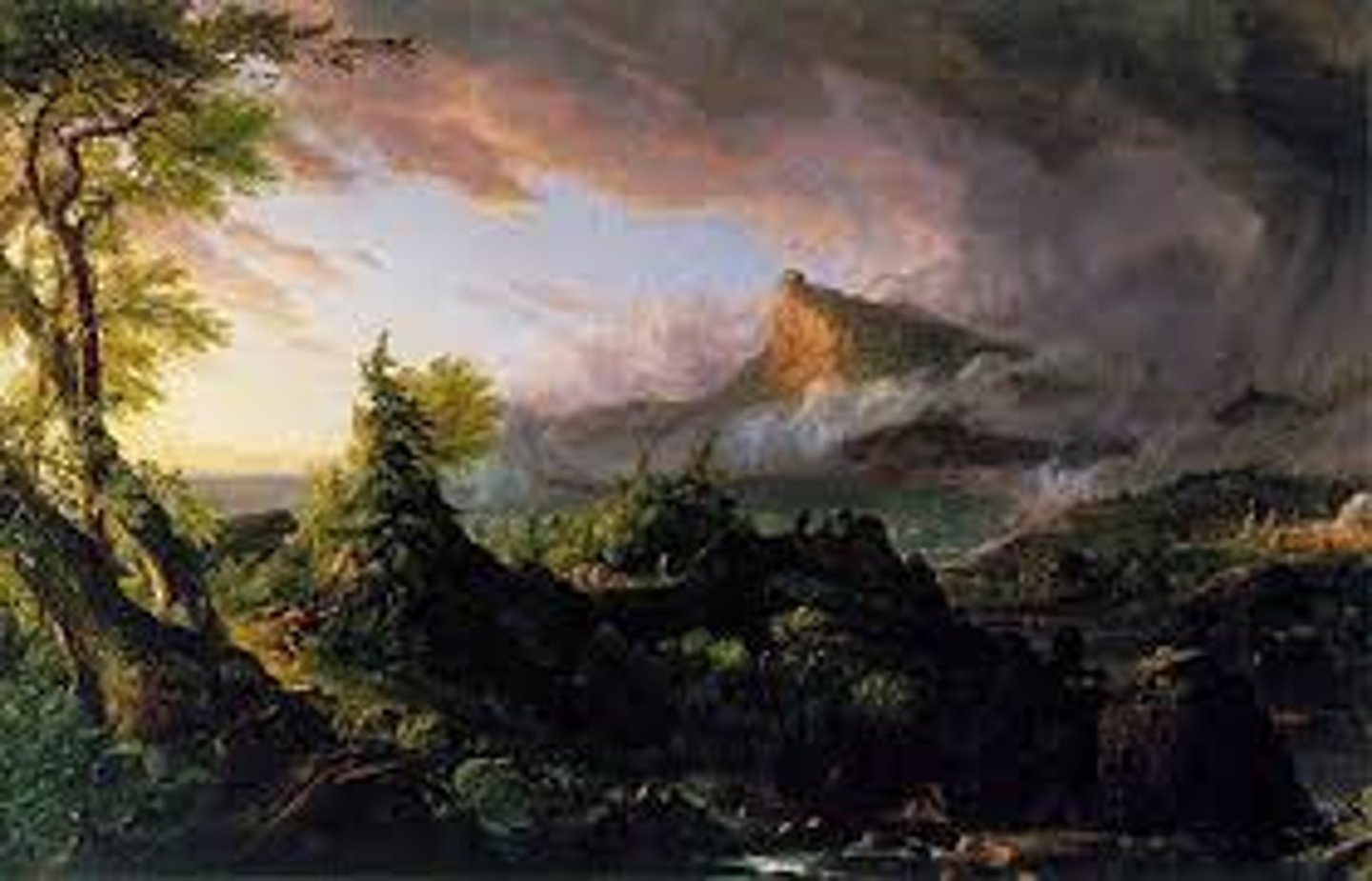
The Course of Empire: Desolation
Thomas Cole
1. Shows ecocriticism
2. Shows the anthropocene and how human construction affects nature
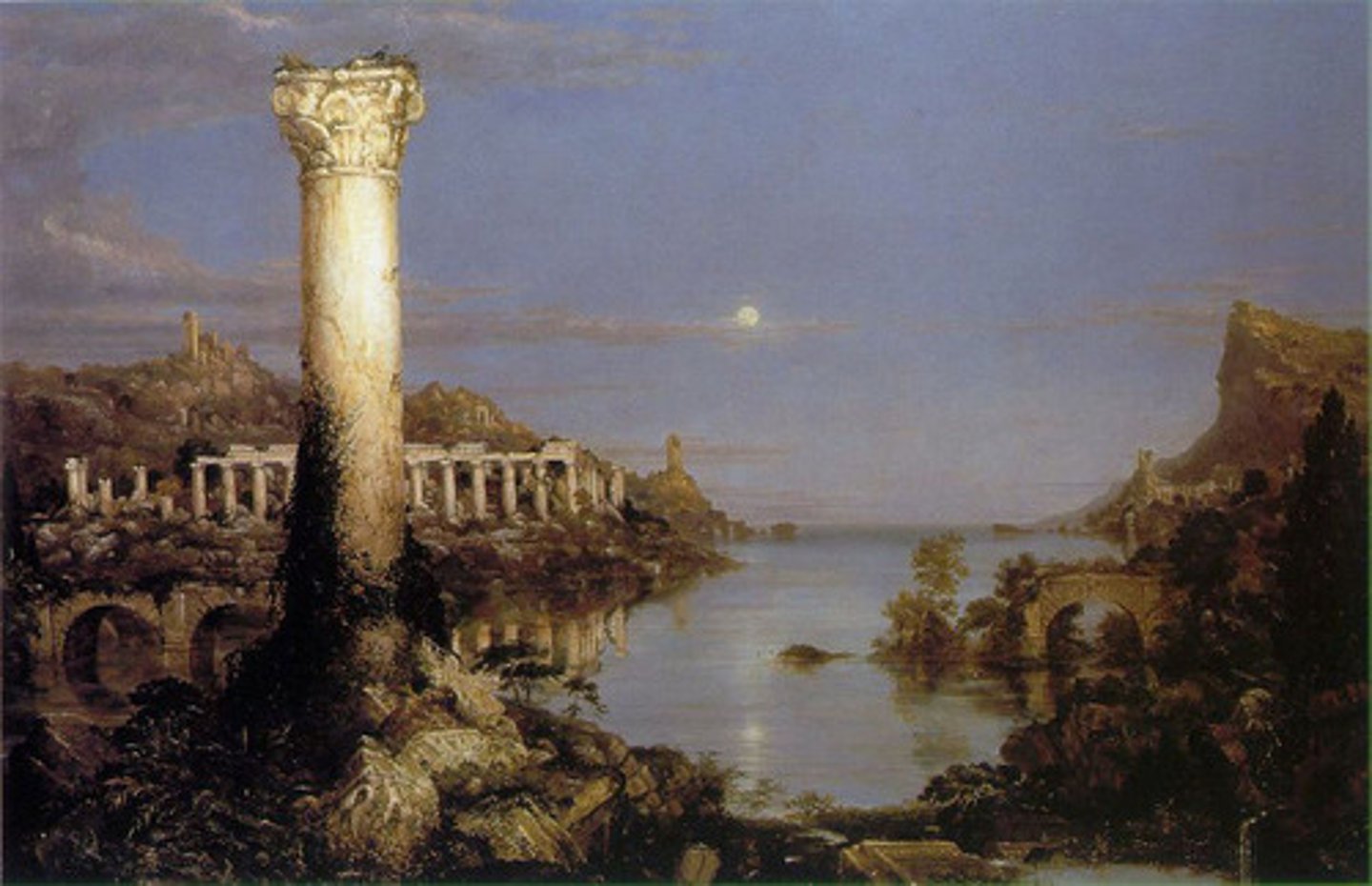
Mah-To-Toh-Pa "Four Bears"
George Caitlin
1. Eagle feathers and headdress show that he is a high-ranked individual with status
2. Artist admired Mah-To-Toh-Pa's brave charge into battle (shown by his proud stance)
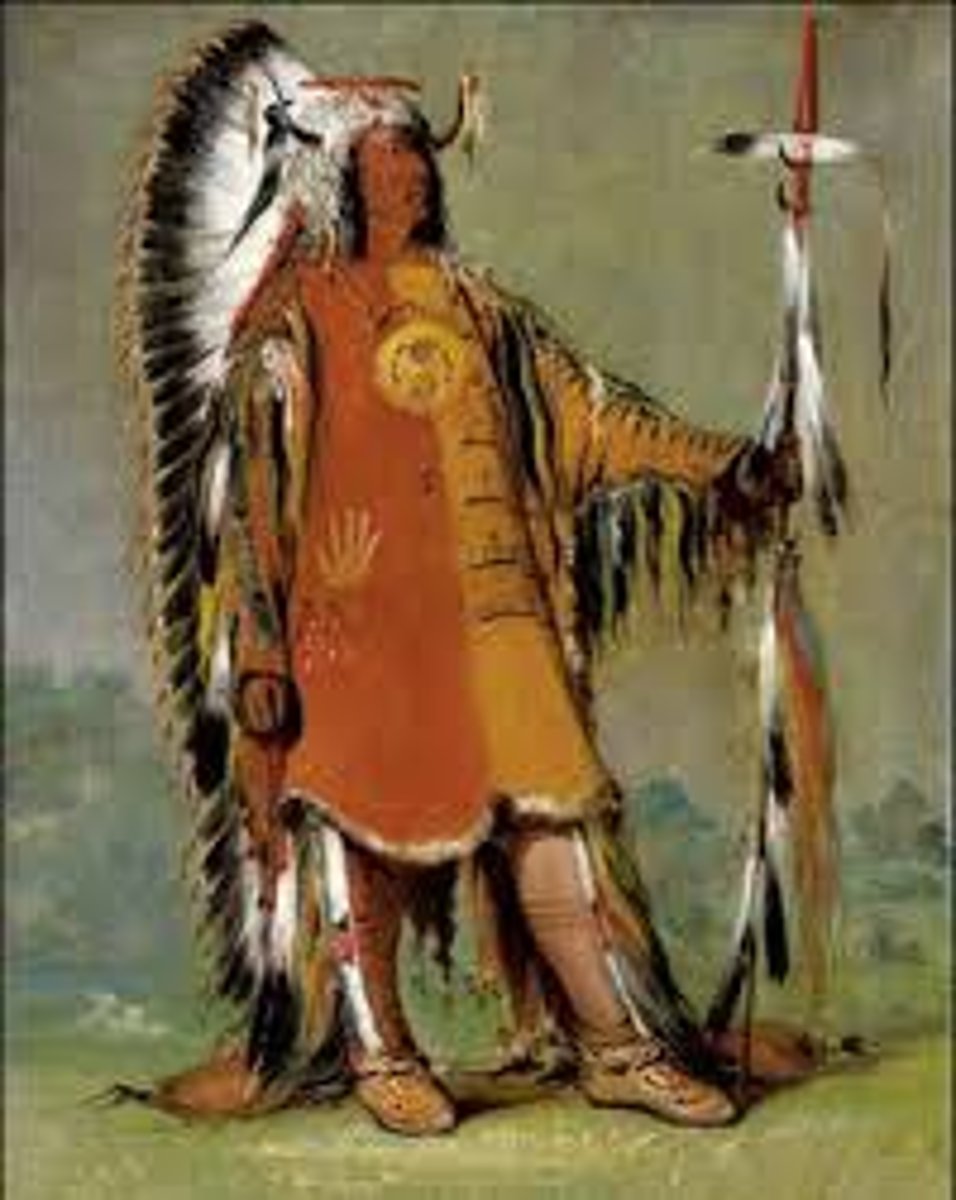
Mah-To-Toh-Pa's Pictographic Buffalo Hide Robe
1. Shows counting coup-act of bravery where he touched his opponent
2. Used as an aid to recover triumphant events (talley marks show enemies killed)
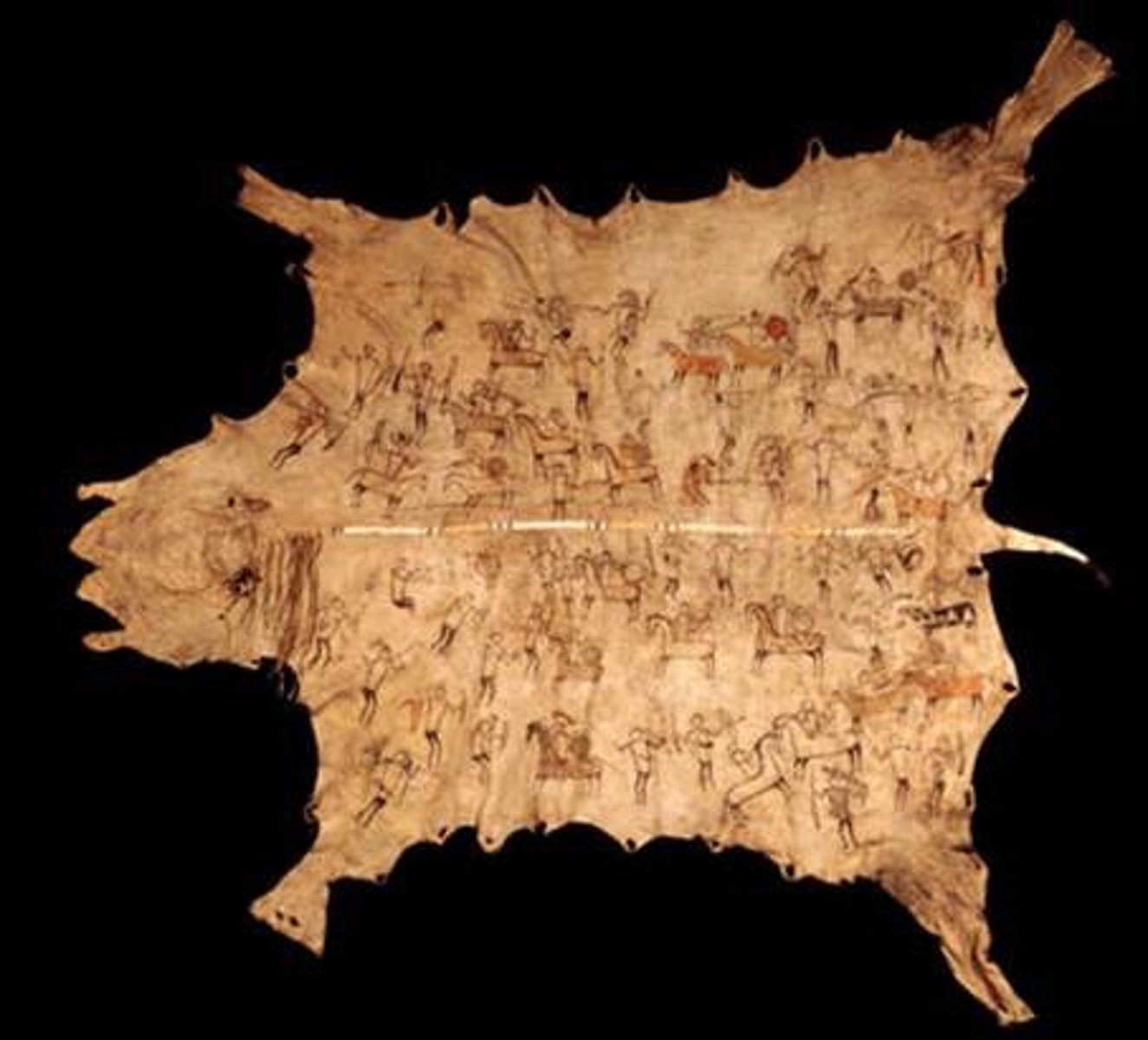
Lakota Dream or Vision of Himself Changed to a Destroyer Riding a Buffalo Eagle
Black Hawk
1. This is a ledger drawing
2. "buffalo eagle" is a thunder being which has knowledge from the spirit world
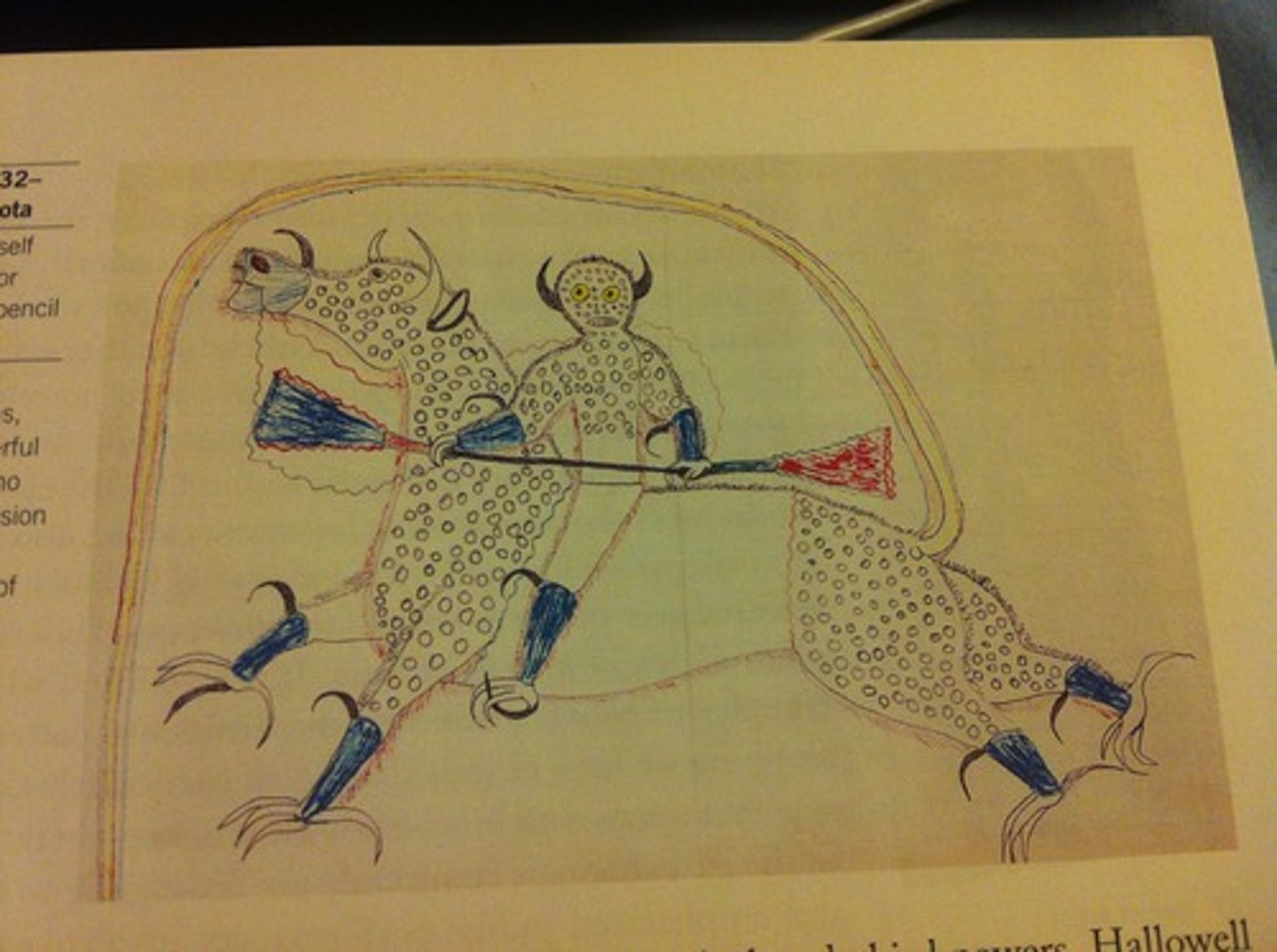
Manifest Destiny
John Gast
1. Colonizers had a God-given right to expand and move west
2. Shows the movement of technology and "civilization" with little regard for Natives that lived there
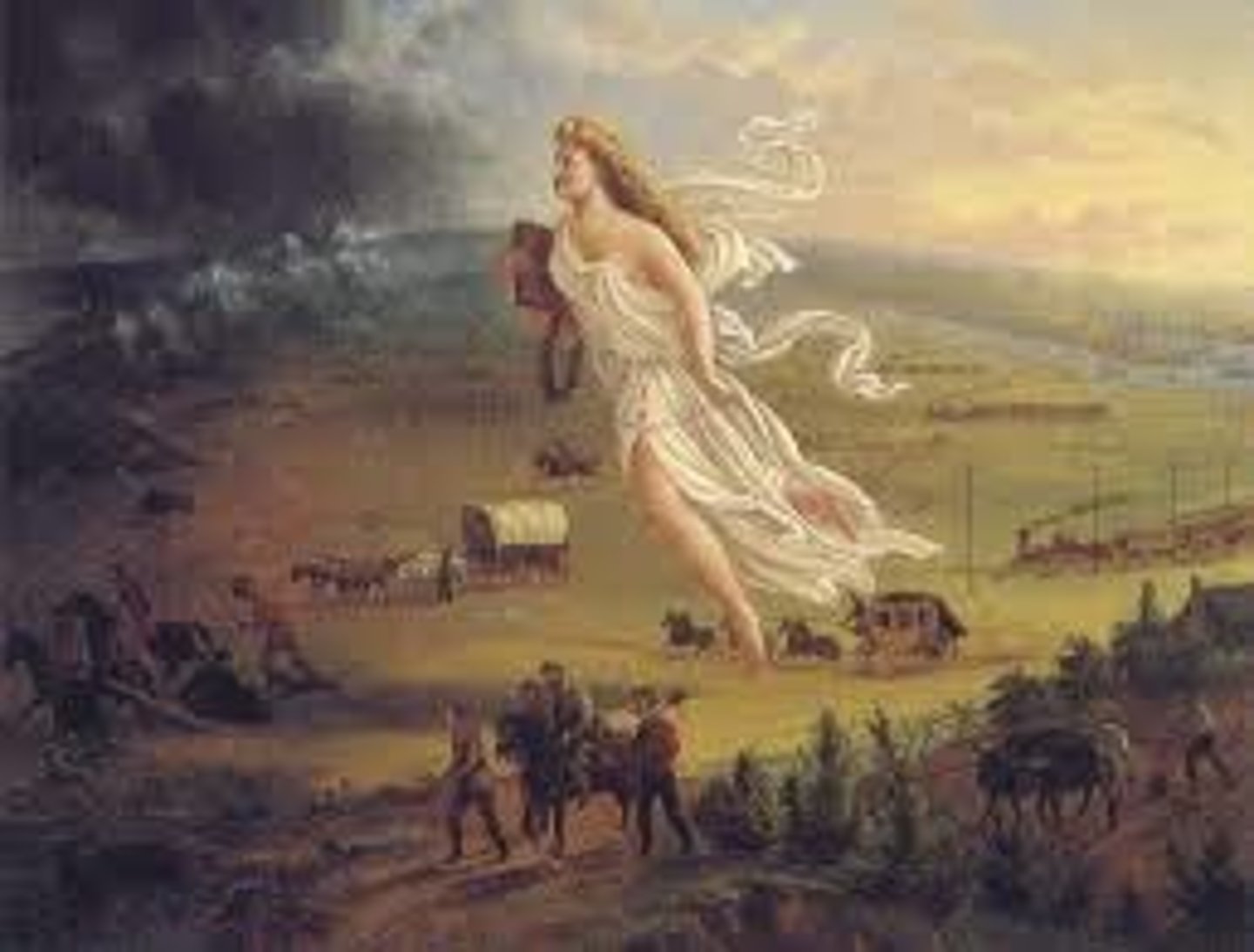
Rocky Mountains
Albert Bierstadt
1. Sublime painting
2. Exaggerated beauty, promoted in Europe
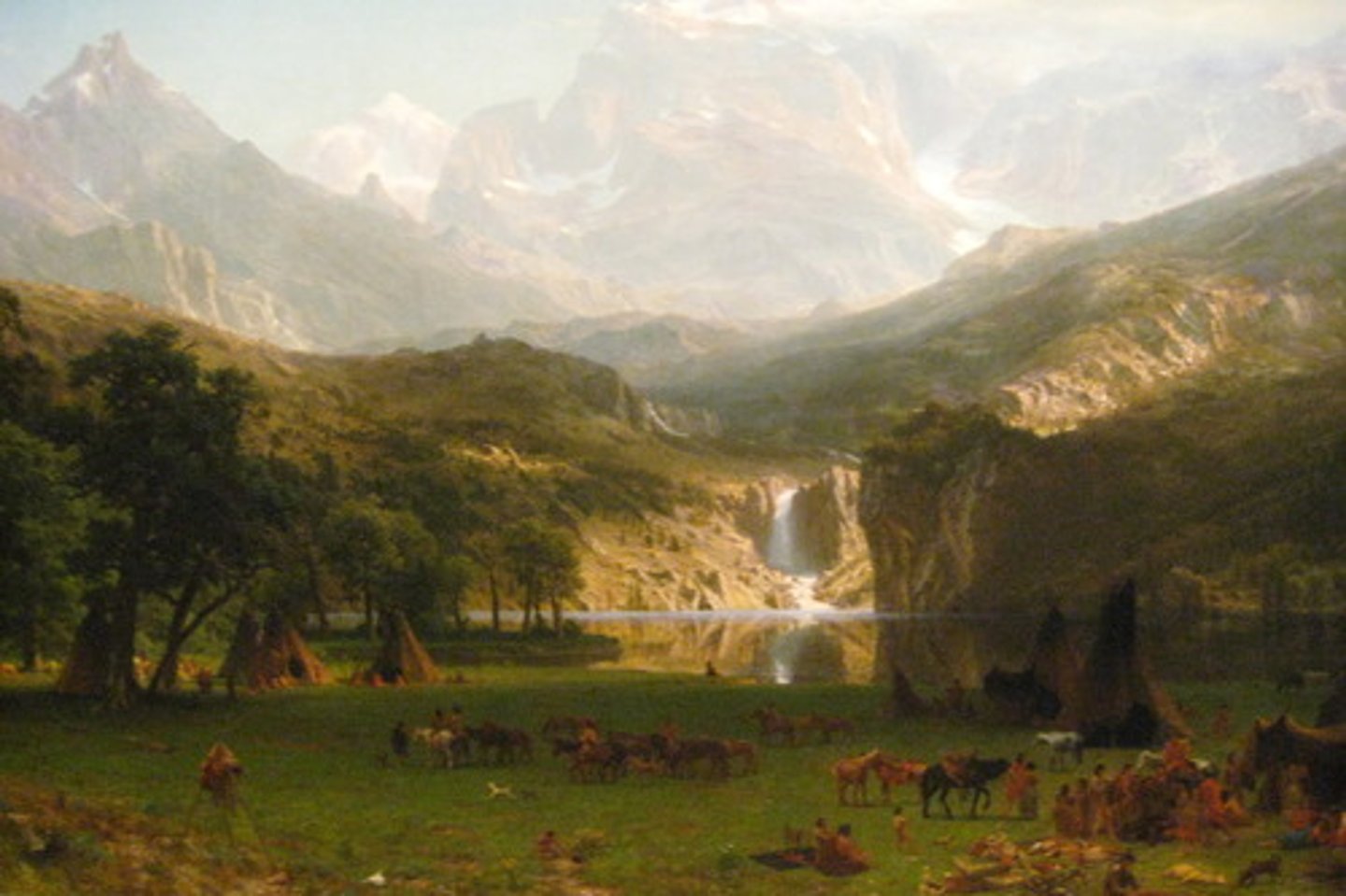
Grand Canyon of the Yellowstone
Thomas Moran
1. Sublime painting, not exact replication
2. Used to convince government to create the Yellowstone national park
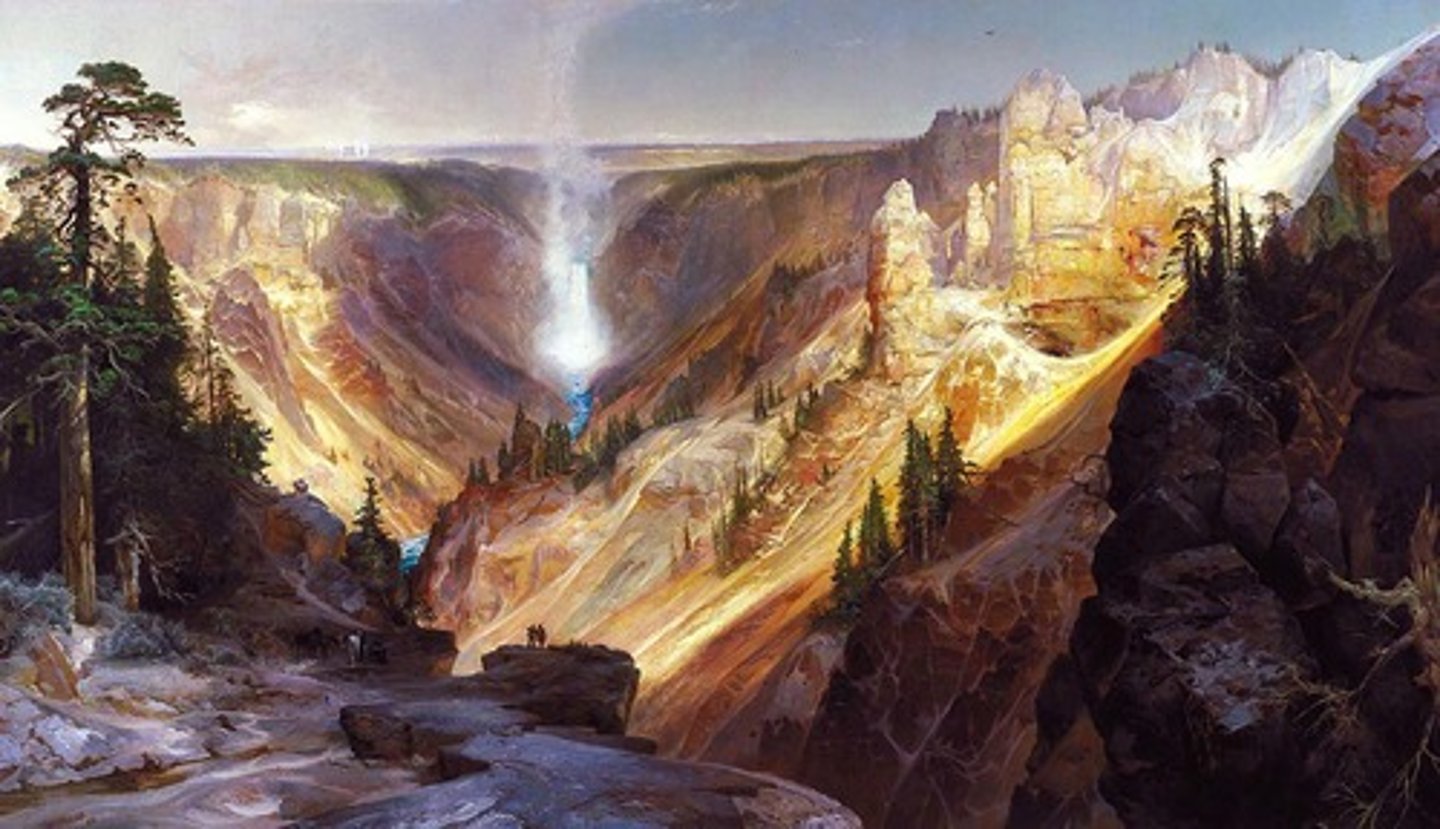
The Veteran in a New Field
Winslow Homer
1. Created right after the civil war
2. Shows the idea of being at home, not in the battlefield
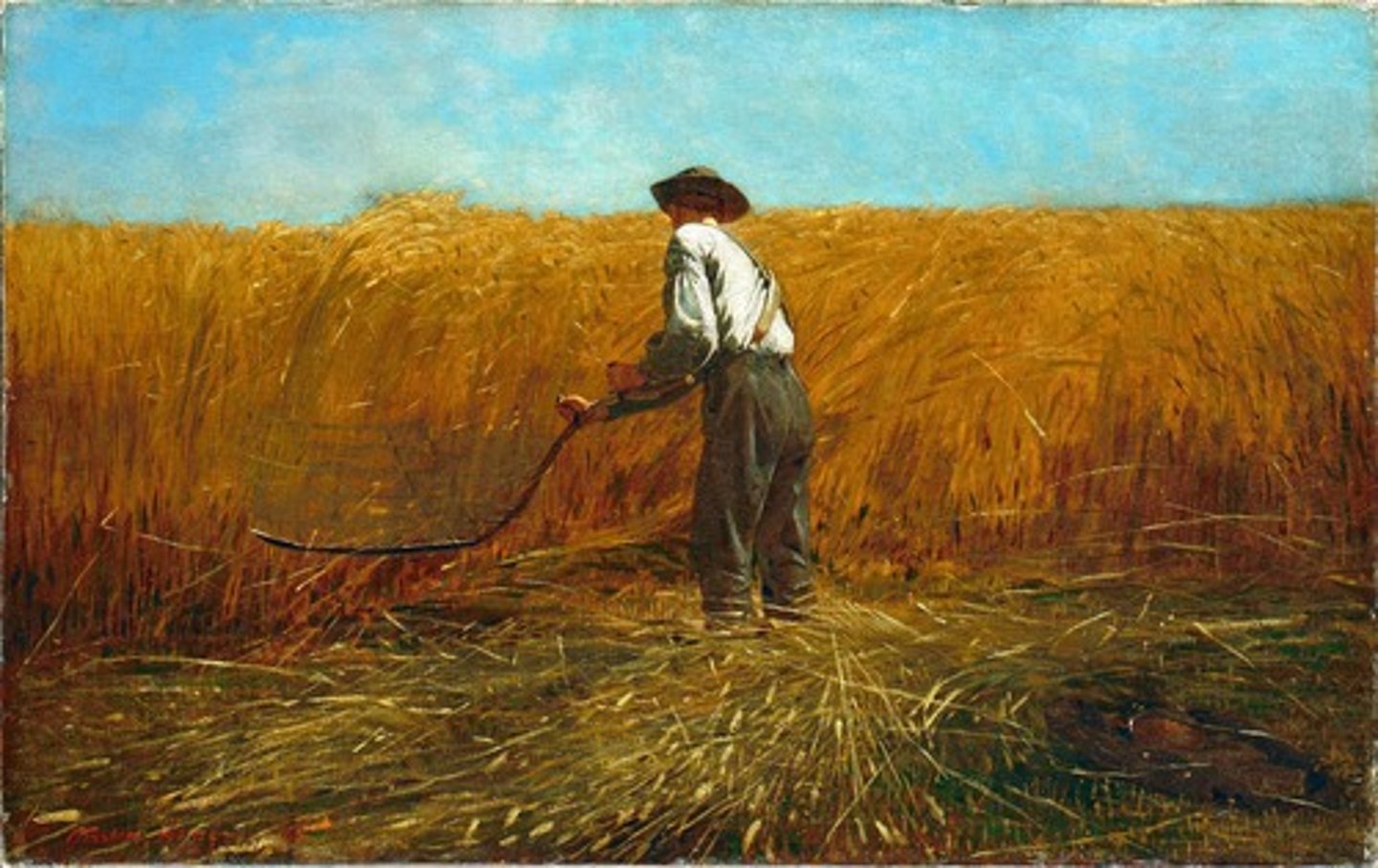
Greek Slave
Hiram Powers
1. Shows the doctrine of distance: slavery did not seem to be in the viewer's space/lifetimes
2. Created in neoclassicm style to show purity and beauty
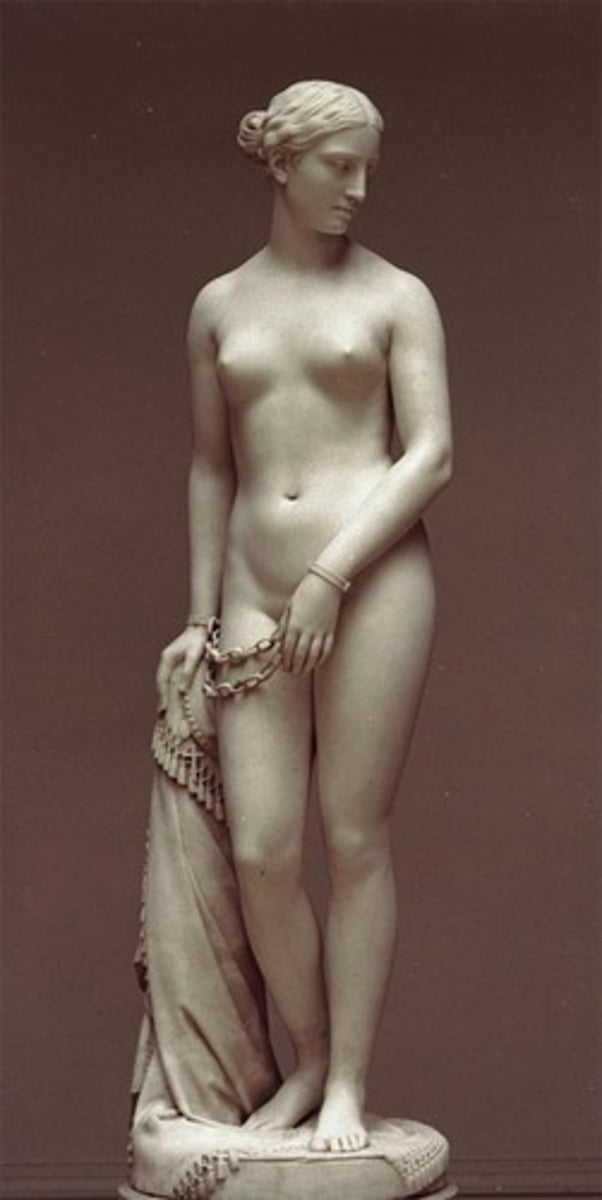
Forever Free
Edmonia Lewis
1. Depicts the man as the protector of the family
2. Shows that women still have to pray and hope for equality
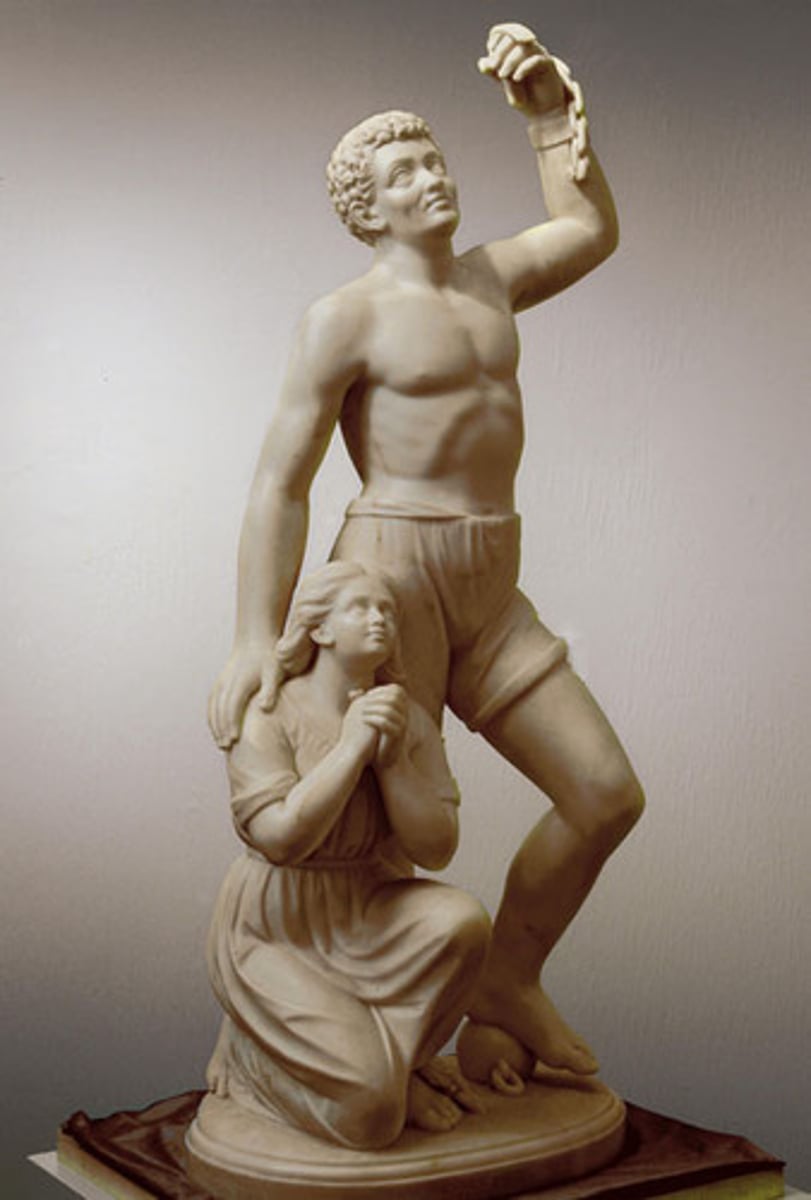
The Freedman
John Quincy Adams Ward
1. Depicted with individualized features (more weight to black people being recognized)
2. Displayed with a key which points to the hope for the rest of the chains being unlocked and removed
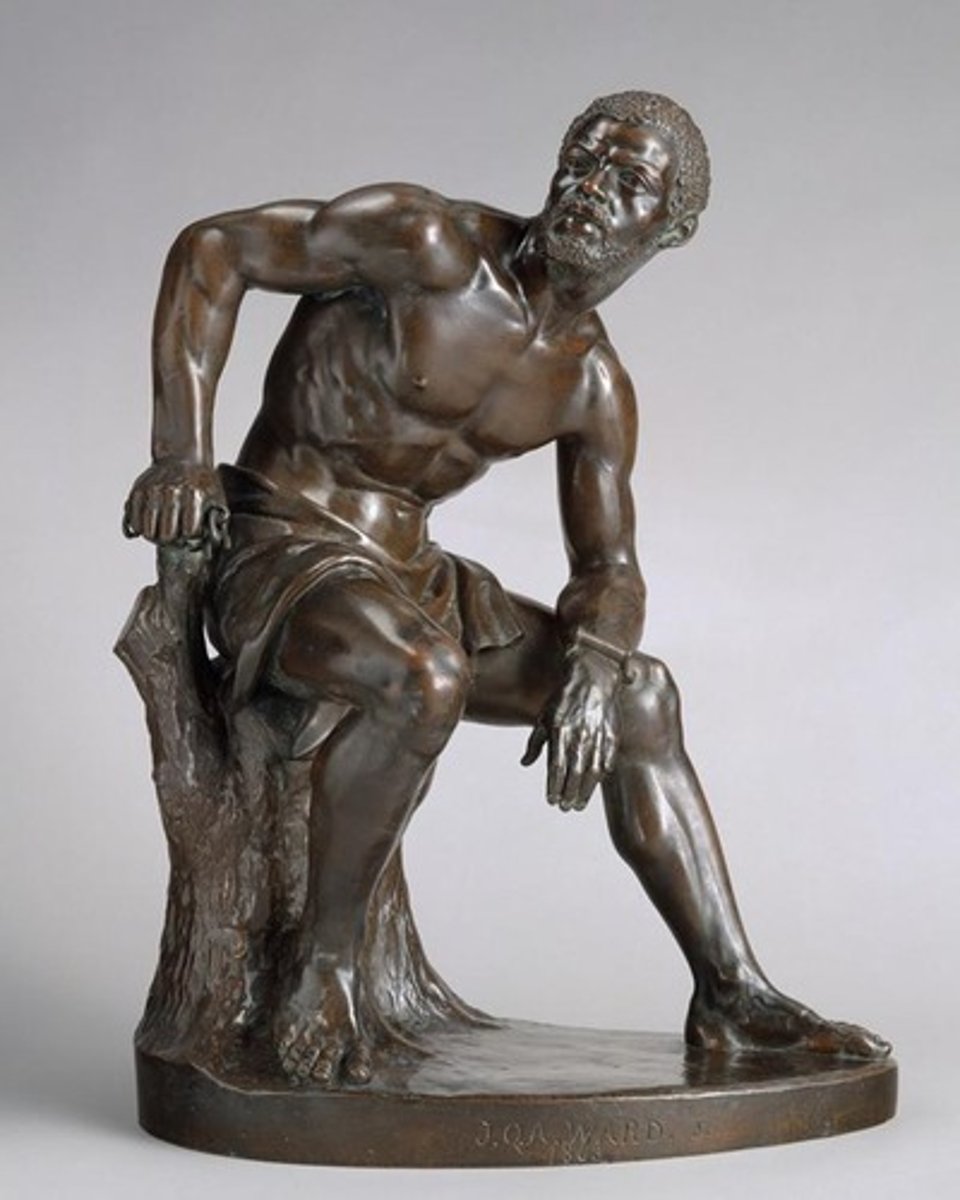
The Emancipation
Thomas Ball
1. Depicts freedom of slaves as a favor done by white people (erases black effort)
2. Highlights Lincoln as a father/God-like figure
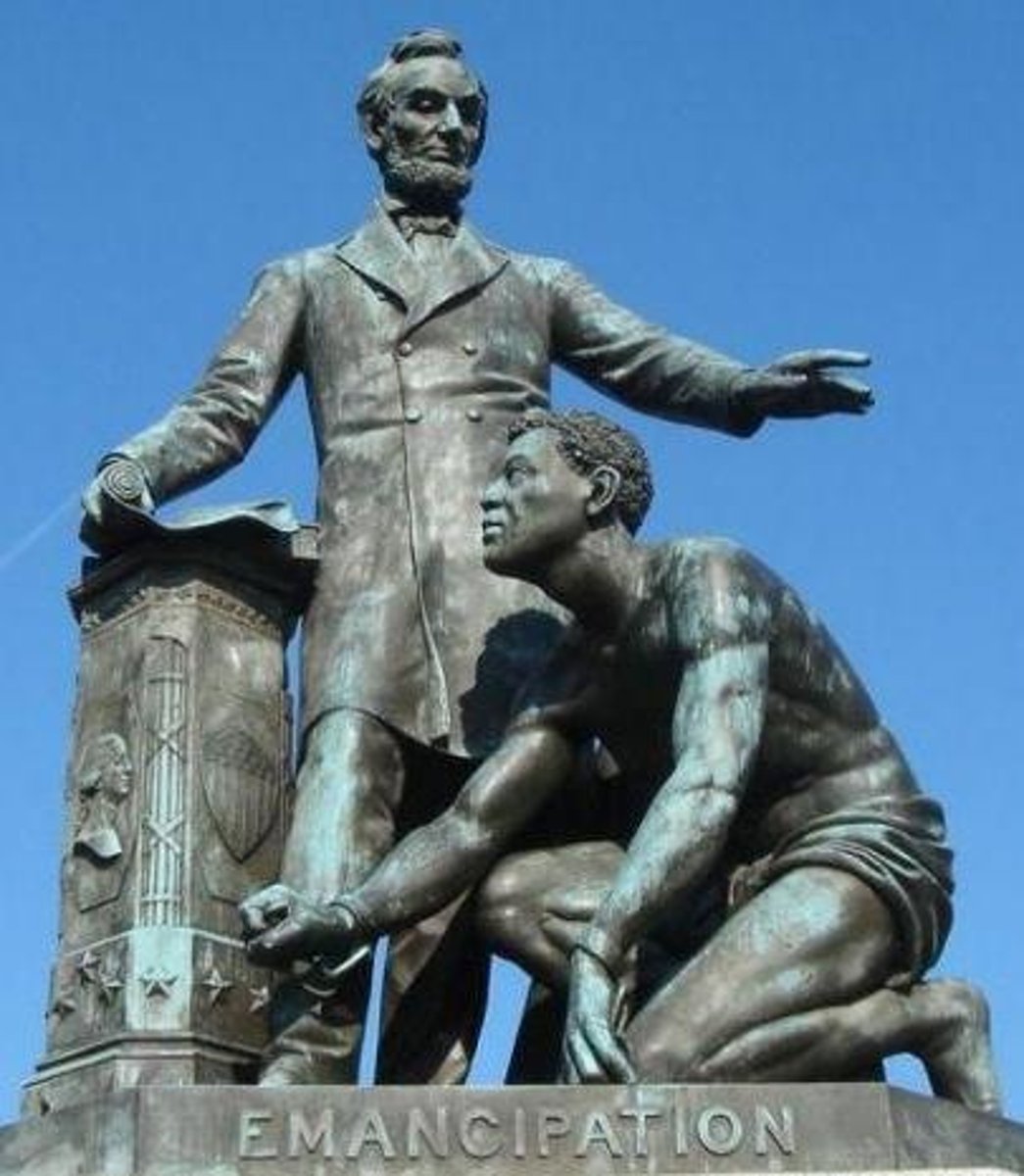
Abolition Medallion
Josiah Wedgwood
1. Token of support for end of slave trade in england
2. Depicts black man as praying and needing permission for freedom
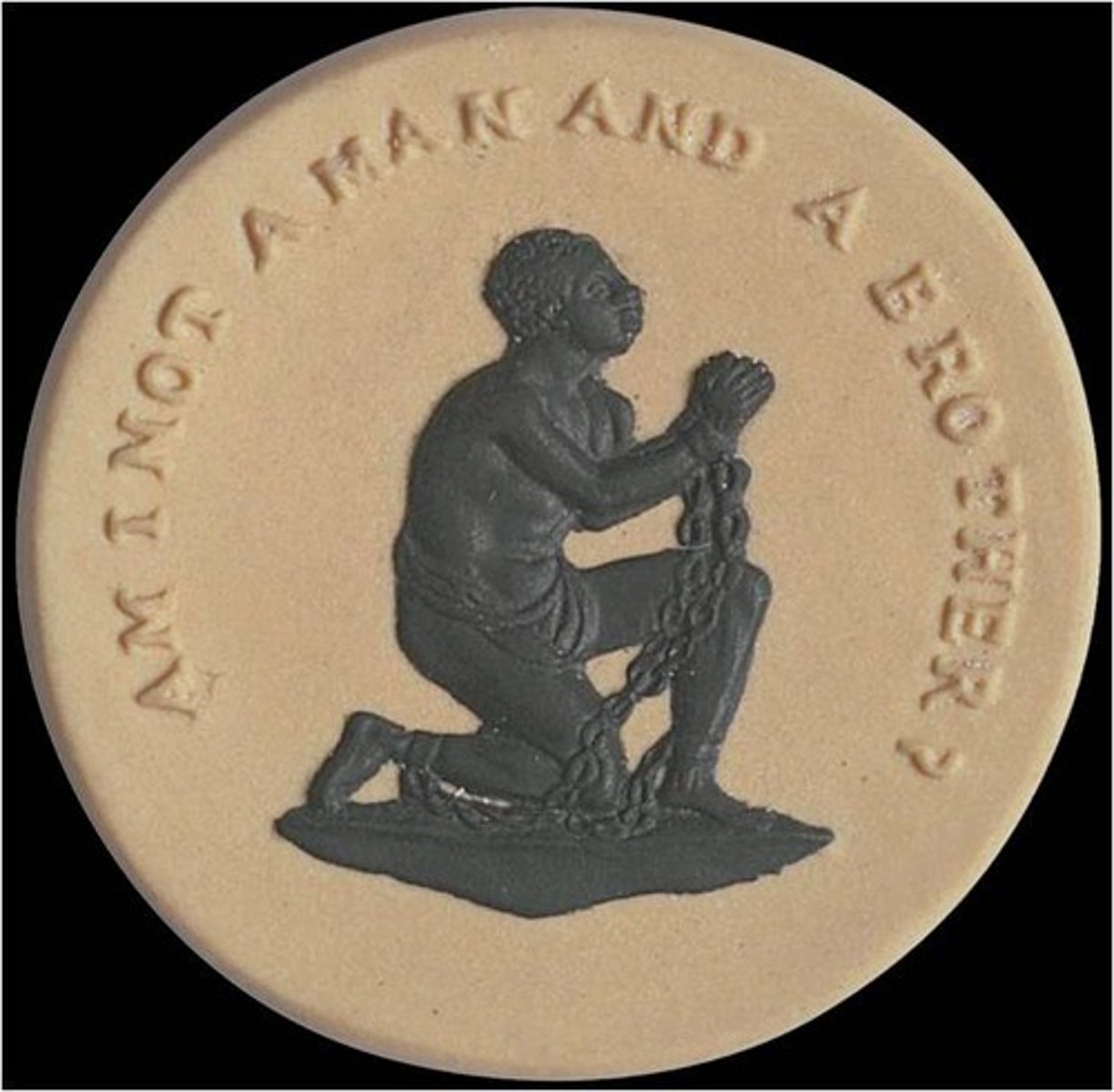
Banjo Lesson
Henry Ossawa Tanner
1. Counters the idea of carefree slaves playing music/banjo
2. Emphasizes the importance of education and tradition through generations for musicality
